
by Ria Olivier | Sep 25, 2020 | Fellowship, Legacy, Marion Island, SANAP, Science, sub-Antarctic, Uncategorised, Women in Science
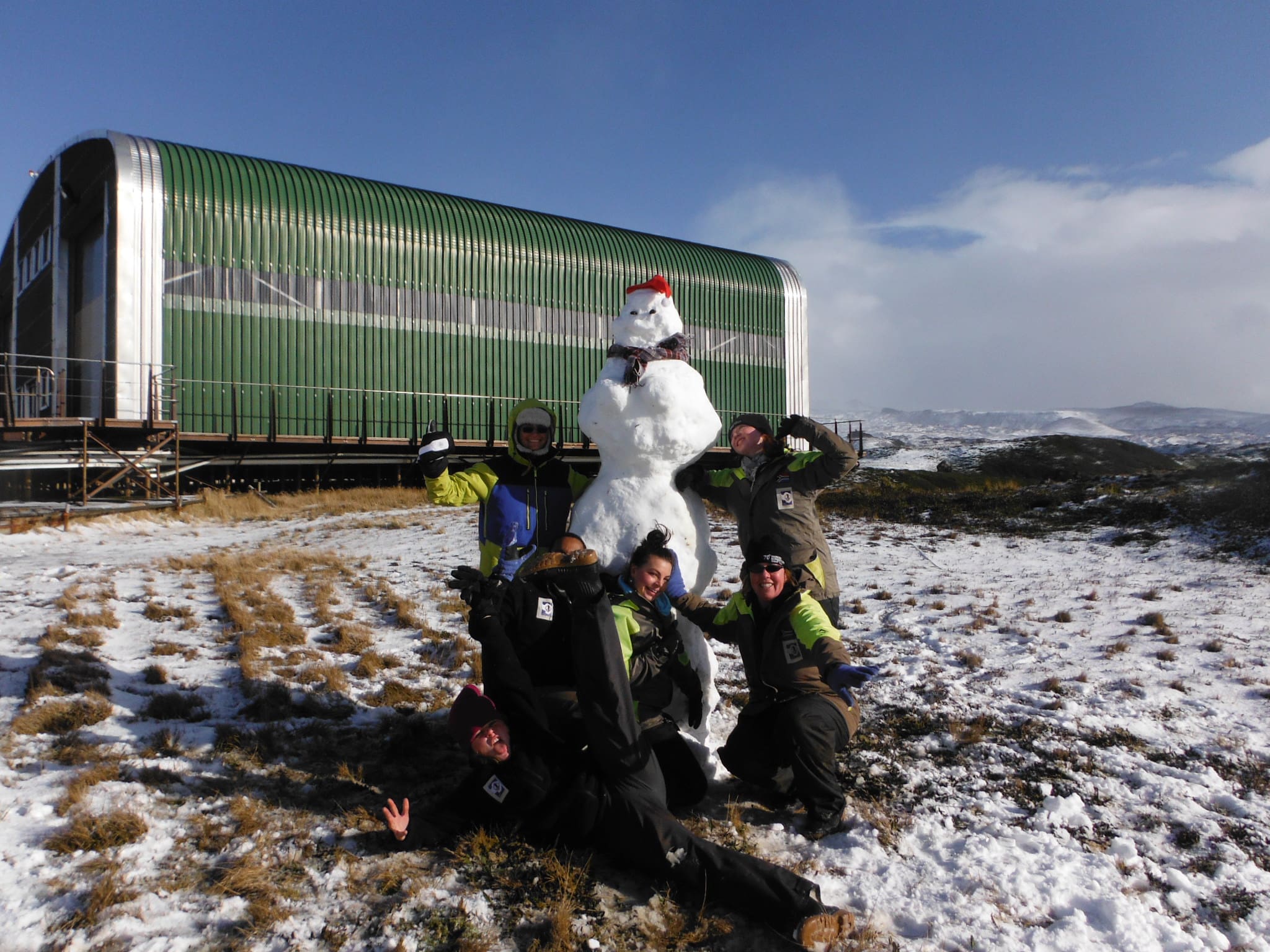
 Mariëtte Wheeler – regular freelancer for Antarctic Legacy of South Africa was born and bred a proud Pretorian girl. But my passion for the ocean developed throughout my childhood as my grandparents lived in Knysna. In my late teens I found myself staring at the ocean, wondering what it looks like beyond the horizon.
Mariëtte Wheeler – regular freelancer for Antarctic Legacy of South Africa was born and bred a proud Pretorian girl. But my passion for the ocean developed throughout my childhood as my grandparents lived in Knysna. In my late teens I found myself staring at the ocean, wondering what it looks like beyond the horizon.
After completing my BSc, BSc honours and MSc in Zoology at the University of Port Elizabeth (currently Nelson Mandela University), I had the opportunity to explore beyond the horizon on Marion Island in 2004–2005 as a member of M61. My PhD was done through the University of Cape Town (with Prof Les Underhill and Dr Marienne de Villiers as supervisors) and University of Pretoria (with Prof Marthán Bester as supervisor). I investigated the effect of human disturbance on the seabirds and seals at Marion Island. My team mates of M61 called me the hybrid birder-sealer as I was fortunate to work on both. I have fond memories of working closely along with the other field workers. For my behavioural observations of the animals I spent days in the cold with semi-frozen fingers and toes, but it was fantastic to be so close to these animals in their natural environment. Chocolate and condensed milk saw me through for energy. I made great friends on this trip who have been standing by me through celebrations but also the difficult times in life.
 For the second year of my study I had a field assistant Prideel Majiedt on Marion Island and I supervised from here. One of my best round island trips was during the take-over of 2005 with Prideel(right), Marienne and John Cooper. John and I summited a few of the Marion hills. In 2006 I went for take-over to conduct more research on the Wandering Albatrosses.
For the second year of my study I had a field assistant Prideel Majiedt on Marion Island and I supervised from here. One of my best round island trips was during the take-over of 2005 with Prideel(right), Marienne and John Cooper. John and I summited a few of the Marion hills. In 2006 I went for take-over to conduct more research on the Wandering Albatrosses.
After completing my PhD in 2009, I worked for the Southern African Butterfly Conservation Assessment (SABCA) and M2 Environmental Connections (as an environmental consultant). Thereafter I first worked as the manager of the Conservation Leadership Programme of the Endangered Wildlife Trust (EWT) and then as Biodiversity Information Specialist. A highlight in my research career was to give two presentations on my PhD work at the International Polar Year (IPY) 2010 conference in Oslo, Norway. There I also became involved with the Association of Polar Early Career Scientists (APECS). Later that year I was selected to be on the international Executive Committee (ExCom). After my term on the ExCom, I was still actively involved on the Council. In 2012, I was selected as one of the Mail & Guardian’s 200 Young South Africans.
 On 27 February 2013, I received a phone call from Bruce Dyer asking if I would be interested to go to Marion Island as their one birder had withdrawn from the team. I had 24 hours to decide! Fortunately the timing was perfect as my contract with EWT was until the end of February. In April 2013 I sailed again to Marion Island as Department of Environment Affairs: Oceans and Coasts birder. What an amazing feeling to see Marion Island again! I therefore had the opportunity to travel on both the SA Agulhas and SA Agulhas II and to live in both the old base and the new base. My previous year on the island was during the construction time, so as a member of M70 I first experienced the isolation of only seeing the “Red Taxi II” a year later. I treasure memories of braai evenings in the braai room with its beautiful views, theme parties and unique hut radio communication.
On 27 February 2013, I received a phone call from Bruce Dyer asking if I would be interested to go to Marion Island as their one birder had withdrawn from the team. I had 24 hours to decide! Fortunately the timing was perfect as my contract with EWT was until the end of February. In April 2013 I sailed again to Marion Island as Department of Environment Affairs: Oceans and Coasts birder. What an amazing feeling to see Marion Island again! I therefore had the opportunity to travel on both the SA Agulhas and SA Agulhas II and to live in both the old base and the new base. My previous year on the island was during the construction time, so as a member of M70 I first experienced the isolation of only seeing the “Red Taxi II” a year later. I treasure memories of braai evenings in the braai room with its beautiful views, theme parties and unique hut radio communication.
After returning from the island, Prof Underhill suggested that I study education. In his words: “There is a difference between having been there to tell a child about an albatross, or just teaching from a textbook”. I completed the Postgraduate Certificate in Education (PGCE) at the University of Cape Town in 2015. During this time I also worked ad hoc. for Antarctic Legacy of South Africa (ALSA) through Facebook communication and spreading awareness at schools.
 In 2016 I took up a post at Protea Heights Academy in Protea Heights (PHA), Brackenfell teaching Natural Sciences and Life Sciences. In 2018 I taught at a rural community school, Sterkspruit Christian Private School in what used to be Transkei. I lived in the picturesque Lady Grey at the foothills of the Drakensberg. In October 2018 I returned to PHA teaching Life Sciences.
In 2016 I took up a post at Protea Heights Academy in Protea Heights (PHA), Brackenfell teaching Natural Sciences and Life Sciences. In 2018 I taught at a rural community school, Sterkspruit Christian Private School in what used to be Transkei. I lived in the picturesque Lady Grey at the foothills of the Drakensberg. In October 2018 I returned to PHA teaching Life Sciences.
PHA invited Antarctic Legacy of South Africa to take part in our Women In Science event August 2019, where Anche Louw presented on Marion Island to the school hall filled with primary and high school girls and female educators. At one point she asked learners who knew what an albatross looks like to put up their hands. Afterwards my learners proudly told me that they all had their hands up! In 2019 I was selected as 1st Runner up in the National Teacher’s Award for Excellent in Teaching Natural Sciences (GET) for Metro East and North Education Districts.
 From 2020 PHA is one of the 6 nodal schools for the new Gr 10 to 12 subject Marine Sciences, in collaboration with Two Oceans Aquarium (the writers of the curriculum). I am now the departmental head of Marine Sciences, with Shaun Seaward as colleague. I am also teaching Life Sciences. Recently my learners were involved in the first World Albatross Day. Unfortunately due to COVID, plans that John Cooper and I had to get the entire school involved could not realise. With the international Great Albicake Bake Off as inspiration, I asked my learners (who were all still in lockdown) to make, bake, draw or paint anything creative provided that there was at least one albatross on. In this way they all learned more about albatrosses and enjoyed being creative. Antarctic Legacy of South Africa (ALSA) and the Agreement on the Conservation of Albatrosses and Petrels (ACAP) sponsored posters and books as prizes.
From 2020 PHA is one of the 6 nodal schools for the new Gr 10 to 12 subject Marine Sciences, in collaboration with Two Oceans Aquarium (the writers of the curriculum). I am now the departmental head of Marine Sciences, with Shaun Seaward as colleague. I am also teaching Life Sciences. Recently my learners were involved in the first World Albatross Day. Unfortunately due to COVID, plans that John Cooper and I had to get the entire school involved could not realise. With the international Great Albicake Bake Off as inspiration, I asked my learners (who were all still in lockdown) to make, bake, draw or paint anything creative provided that there was at least one albatross on. In this way they all learned more about albatrosses and enjoyed being creative. Antarctic Legacy of South Africa (ALSA) and the Agreement on the Conservation of Albatrosses and Petrels (ACAP) sponsored posters and books as prizes.




I am blessed that I am able to combine both my passion in marine biology as well as education. Life does not always take you where you thought it would, and sometimes you struggle over symbolic lava such as found at Blackrocks Plateau. But if you “Just keep swimming” as Dory from Finding Nemo said, you will see beauty around you such as the flight of the albatross, a sunset at Swartkop amphitheatre or the smile of a learner. Text and images supplied by Mariette Wheeler. Visit the ALSA archive for more images of Mariette on Marion Island.
Ria Olivier, Antarctic Legacy of South Africa, 25 September 2020.

by Ria Olivier | Aug 22, 2020 | Antarctica, Gateway cities, Legacy, SANAP, SANAP Student, SEAmester

 Rudzani Silima (Rudzi) have from a young age, always known that she would pursue a career in environmental conservation and science. “I grew up in the very small town of Louis Trichardt, surrounded by nature. Having a great attitude in subjects such as science, math, biology and geography. It was a no brainer to start my undergrad career in Marine Science at the Cape Peninsula University of Technology. CPUT not only provided the academic expertise that I would need in the future but also, in 2017, I was placed at the SAEON Egagasini node for my work integrated learning. This opened the floodgates to more networking and career building opportunities.
Rudzani Silima (Rudzi) have from a young age, always known that she would pursue a career in environmental conservation and science. “I grew up in the very small town of Louis Trichardt, surrounded by nature. Having a great attitude in subjects such as science, math, biology and geography. It was a no brainer to start my undergrad career in Marine Science at the Cape Peninsula University of Technology. CPUT not only provided the academic expertise that I would need in the future but also, in 2017, I was placed at the SAEON Egagasini node for my work integrated learning. This opened the floodgates to more networking and career building opportunities.



 (l-r: Rudzi and Nompumelelo(DEFF),weighing my luggage, Ria Olivier(ALSA) sent me on my trip, during transit I said goodbye to my family) To date I have attained a collection of prizes from my university and conferences, further validating my determination to advocate for the oceans and our planet. As the best Seamester student I was chosen to be the champion for the Gateway to Antarctica City of Cape Town Earlier this year, with the help of the Antarctic Legacy of South Africa , the National Research Foundation and the Department of Environment Forestry and Fisheries, I was able to make my first trip to Antarctica.
(l-r: Rudzi and Nompumelelo(DEFF),weighing my luggage, Ria Olivier(ALSA) sent me on my trip, during transit I said goodbye to my family) To date I have attained a collection of prizes from my university and conferences, further validating my determination to advocate for the oceans and our planet. As the best Seamester student I was chosen to be the champion for the Gateway to Antarctica City of Cape Town Earlier this year, with the help of the Antarctic Legacy of South Africa , the National Research Foundation and the Department of Environment Forestry and Fisheries, I was able to make my first trip to Antarctica.

 The Antarctic Cities Youth Expedition, a collaboration between 5 cities, an expedition with five young and vibrant individuals, who share a common passion for the Antarctic environment. A product of the expedition was the founding of the Antarctic Youth Coalition, which aims to connect the five gateway cities, and to encourage sustainable consumption and practises within the cities for the sake of the Antarctic landscape. (image left waiting for our flight at Punta Arenas to Antarctica. Right: Visiting the Uruguay Station on Antarctica
The Antarctic Cities Youth Expedition, a collaboration between 5 cities, an expedition with five young and vibrant individuals, who share a common passion for the Antarctic environment. A product of the expedition was the founding of the Antarctic Youth Coalition, which aims to connect the five gateway cities, and to encourage sustainable consumption and practises within the cities for the sake of the Antarctic landscape. (image left waiting for our flight at Punta Arenas to Antarctica. Right: Visiting the Uruguay Station on Antarctica

 There are many controversies related to climate change today, however, in Antarctica there is physical evidence that climate change is happening right now and not in some distant future. Therefore, the formation of the Antarctic Youth Coalition couldn’t be more perfectly timed. The AYC, hence from now on aims to make accessible the very important science done in the Southern Ocean to everyday citizens in the five gateway cities but also all around the world. Listen to Rudzi while being part of ACYE, video made by project leader Prof Juan Salazar
There are many controversies related to climate change today, however, in Antarctica there is physical evidence that climate change is happening right now and not in some distant future. Therefore, the formation of the Antarctic Youth Coalition couldn’t be more perfectly timed. The AYC, hence from now on aims to make accessible the very important science done in the Southern Ocean to everyday citizens in the five gateway cities but also all around the world. Listen to Rudzi while being part of ACYE, video made by project leader Prof Juan Salazar
 “Therefore, all of us, common or otherwise, share the responsibility for a healthy, thriving Antarctica and our whole planet! My parting word, specifically to us young people is to never give up on yourself and never give up on your dreams. All of us have the potential to change the world in our own very unique and exciting ways”
“Therefore, all of us, common or otherwise, share the responsibility for a healthy, thriving Antarctica and our whole planet! My parting word, specifically to us young people is to never give up on yourself and never give up on your dreams. All of us have the potential to change the world in our own very unique and exciting ways”
(Images by ACYE group and text supplied by Rudzi Silima and ALSA)

by Ria Olivier | Jun 19, 2020 | Antarctica, Discover, Legacy
 Sydney Cullis’s hobby turned out to be a bonus for the preservation of the Legacy of South Africa in the Antarctic region. ” It all started in 1993 when our son, James, was in Matric he had to produce a talk for one of the school societies and, as the Fiennes/Stroud “In the footsteps of Scott” expedition to cross Antarctica unsupported was in the news, he decided to choose it as his subject. To provide him with some guidance I started reading about the history of Antarctic exploration – and the more I read, the more fascinating I found it – and the more South African connections I came across. I was probably more receptive than I might otherwise have been as the first film I ever went to see (aged 6) was “Scott of the Antarctic” in 1948 and I have never forgotten the haunting soundtrack music of the Vaughan Williams’s 7th Symphony as they struggled up the Beardmore Glacier.
Sydney Cullis’s hobby turned out to be a bonus for the preservation of the Legacy of South Africa in the Antarctic region. ” It all started in 1993 when our son, James, was in Matric he had to produce a talk for one of the school societies and, as the Fiennes/Stroud “In the footsteps of Scott” expedition to cross Antarctica unsupported was in the news, he decided to choose it as his subject. To provide him with some guidance I started reading about the history of Antarctic exploration – and the more I read, the more fascinating I found it – and the more South African connections I came across. I was probably more receptive than I might otherwise have been as the first film I ever went to see (aged 6) was “Scott of the Antarctic” in 1948 and I have never forgotten the haunting soundtrack music of the Vaughan Williams’s 7th Symphony as they struggled up the Beardmore Glacier.

Sydney and Catherine at “furthest South”

Shackleton’s grave, South Georgia
Although born in Pretoria, I was at school and university in Cape Town. My surgical training started with internship at Groote Schuur Hospital and I was then fortunate to spend time in Zimbabwe, London, Edinburgh, Durban and, by then married to Catherine who I met in the pub after a hockey match in Durban, we returned to Cape Town. In 2007 , as per our partnership agreement, I retired from the practice but continued to assist my partners in theatre – and also celebrated my semi-retirement by undertaking a cruise from Ushuaia in Argentina to the Falklands, South Georgia and the Antarctic Peninsula as far as Petermann Island, just north of the Antarctic Circle. As a result of the Covid-19 pandemic I have now retired fully as it is recommended that surgeons over 60 should stay out of theatre.

John Cooper and Sydney at the Simon’s Town Historical Museum for a luncheon to commemorate the Centenary of Scott’s Midwinter Dinner – 5th June 2011
We visited the UK in 2008 and with my newfound interest in Antarctic history I contacted the Scott Polar Research Institute in Cambridge about the possibility of looking for further South African connections in their archives. Bob Headland, then the Director, replied with an invitation to visit them and he recommended that I read an article he had written on the very subject – “A history of South African Involvement in Antarctica and at the Prince Edward Islands” which to this day is still the definitive article on the subject. His co-author was John Cooper – and it was only when I returned home that I discovered that he was the same John Cooper that I’d been running with three times a week for several years – and was instrumental in the start of ALSA. I was totally unaware of his interest in, and wide knowledge of, Antarctic history and, needless to say, over the years since then we have continued to run together and John has passed on a wealth of information to me.
 Initially my interest was in trawling through the published accounts of the Heroic Era expeditions for South African connections-and discovered that, not only did many of the expeditions use Cape Town or Simon’s Town as a revictualling port, but many of the members of those expeditions had spent time in South Africa either before or after their visits to Antarctica – Maclear (Challenger), Scott, Shackleton, Wild, Joyce, Ferrar (Discovery), Pirie (Scotia), Davis (Nimrod),Oates, Mears (Terra Nova), Gray (Aurora)and James (Endurance) are some of them. As I delved deeper into the subject, I realised that it was part of our history that was not well known here in South Africa. The only visible evidence of this that I was aware of was the Scott Memorial near to the fountain at the bottom of Adderley Street and a small display on Marion Island at the Iziko Museum.
Initially my interest was in trawling through the published accounts of the Heroic Era expeditions for South African connections-and discovered that, not only did many of the expeditions use Cape Town or Simon’s Town as a revictualling port, but many of the members of those expeditions had spent time in South Africa either before or after their visits to Antarctica – Maclear (Challenger), Scott, Shackleton, Wild, Joyce, Ferrar (Discovery), Pirie (Scotia), Davis (Nimrod),Oates, Mears (Terra Nova), Gray (Aurora)and James (Endurance) are some of them. As I delved deeper into the subject, I realised that it was part of our history that was not well known here in South Africa. The only visible evidence of this that I was aware of was the Scott Memorial near to the fountain at the bottom of Adderley Street and a small display on Marion Island at the Iziko Museum.


 (Above: Cape Town Plaque, Plaque outside British Hotel and at Jubilee Square, Simon’s Town) I therefore tried to find ways of highlighting the concept that Cape Town and Simon’s Town were “Gateways to Antarctica” – by creating presentations to historical societies, U3A’s, UCT Summer School, and Ship Societies both in Cape Town and Durban. I also facilitated the erection of plaques listing the Antarctic expeditions that passed through Simon’s Town in Jubilee Square and the British Hotel there. Another plaque containing the list of the 17 historic Antarctic expeditions that had made use of Cape Town was made with a view to it being erected somewhere in the V & A Waterfront – but unfortunately it is still gathering dust somewhere there.
(Above: Cape Town Plaque, Plaque outside British Hotel and at Jubilee Square, Simon’s Town) I therefore tried to find ways of highlighting the concept that Cape Town and Simon’s Town were “Gateways to Antarctica” – by creating presentations to historical societies, U3A’s, UCT Summer School, and Ship Societies both in Cape Town and Durban. I also facilitated the erection of plaques listing the Antarctic expeditions that passed through Simon’s Town in Jubilee Square and the British Hotel there. Another plaque containing the list of the 17 historic Antarctic expeditions that had made use of Cape Town was made with a view to it being erected somewhere in the V & A Waterfront – but unfortunately it is still gathering dust somewhere there.
 Another source of information has been the study of newspaper reports of their visits – thanks to the South African library. One such report on the departure of Aurora from Cape Town in 1911 mentioned how one of the huskies had fallen overboard and had been rescued by a passing dinghy. This enabled the episode to be recorded in a painting of her departure by Jeremy Day which was commissioned to celebrate the centenary of Aurora’s visit to Cape Town. In 2015 John Cooper had alerted me to the risk that the series of Peter Bilas paintings of Antarctic ships on SA Agulhas I might get lost or damaged when being transferred to the new S.A. Agulhas II. We therefore arranged for them to be restored (sponsored by GAC Shipping) and exhibited in the Iziko Maritime Museum at the V&A waterfront.
Another source of information has been the study of newspaper reports of their visits – thanks to the South African library. One such report on the departure of Aurora from Cape Town in 1911 mentioned how one of the huskies had fallen overboard and had been rescued by a passing dinghy. This enabled the episode to be recorded in a painting of her departure by Jeremy Day which was commissioned to celebrate the centenary of Aurora’s visit to Cape Town. In 2015 John Cooper had alerted me to the risk that the series of Peter Bilas paintings of Antarctic ships on SA Agulhas I might get lost or damaged when being transferred to the new S.A. Agulhas II. We therefore arranged for them to be restored (sponsored by GAC Shipping) and exhibited in the Iziko Maritime Museum at the V&A waterfront.
The Commonwealth Trans-Antarctic Expedition of 1955-8 was the first to cross the continent from the Weddell Sea to the Ross Sea – which Shackleton had failed to do in his Endurance expedition of 1914-17. The meteorologist on that expedition was Hannes la Grange, who thereby became the first South African to reach the South Pole and in 1959 he was appointed leader of the first South African expedition to Antarctica (SANAE 1). The surplus after the expedition established a fund and each year, as a result of Hannes’s participation, South Africans are able each year to apply for a grant for Antarctic research. In 2010 I applied for, and received, a grant which enabled an Antarctic display to be established at the Simon’s Town Historical Museum. Last year a poster entitled “Simon’s Town-a Gateway to Antarctica” was added to the Wall of Memory in the centre of the town(Top image with Sydney Cullis).

 I have enjoyed the opportunity whenever Antarctic historians have visited Cape Town to show them our “Antarctic sites” – most memorably when showing Bob Headland around Simon’s town we discovered that Discovery’s badge had been added to those on the wall of the Selbourne drydock. Discovery had undergone an extensive refit in 1926 in the dock prior to her departure on a research voyage to South Georgia which paved the way to the international ban on whaling enacted in 1936
I have enjoyed the opportunity whenever Antarctic historians have visited Cape Town to show them our “Antarctic sites” – most memorably when showing Bob Headland around Simon’s town we discovered that Discovery’s badge had been added to those on the wall of the Selbourne drydock. Discovery had undergone an extensive refit in 1926 in the dock prior to her departure on a research voyage to South Georgia which paved the way to the international ban on whaling enacted in 1936


 (above: Display at Simon’s Town Museum) The significant anniversaries of the historic Antarctic expeditions have been useful to raise awareness of them in South Africa. In December 2021 it will be 250 years since Marion Dufresne spent a month in Cape Town prior to his re-discovering the island which now bears his name and, as a result of its annexation 1947-8, it is an integral part of South Africa. We hope it will be suitably commemorated. Having a niche interest such as this has provided the opportunity when travelling away from Cape Town to search out items of Antarctic interest – (article on ALSA repository) I have been very fortunate to have been afforded the opportunity to develop a new interest/hobby which has resulted in my meeting so many very helpful individuals. I hope that it may have generated a more widespread interest in this relatively unknown facet of South African history.” This is definitely a field where research in the humanities and history of South Africa in the Antarctic can be done.
(above: Display at Simon’s Town Museum) The significant anniversaries of the historic Antarctic expeditions have been useful to raise awareness of them in South Africa. In December 2021 it will be 250 years since Marion Dufresne spent a month in Cape Town prior to his re-discovering the island which now bears his name and, as a result of its annexation 1947-8, it is an integral part of South Africa. We hope it will be suitably commemorated. Having a niche interest such as this has provided the opportunity when travelling away from Cape Town to search out items of Antarctic interest – (article on ALSA repository) I have been very fortunate to have been afforded the opportunity to develop a new interest/hobby which has resulted in my meeting so many very helpful individuals. I hope that it may have generated a more widespread interest in this relatively unknown facet of South African history.” This is definitely a field where research in the humanities and history of South Africa in the Antarctic can be done.
Text and Images supplied by Sydney Cullis.

by Ria Olivier | Apr 17, 2020 | Antarctica, Legacy, SA Agulhas II, SANAE, SANAP, Science, Take-Over Operations, Women in Science
 Jess Verheul grew up in Johannesburg, South Africa and has always had an affinity for the outdoors, wild and remote places, exploring, surviving and adventuring. She believes she might have been inspired and influenced by her grandparents being farmers; “we spent much time playing outside growing up. I loved being on the farm, and my parents took us on some great safari holidays when we were younger too”. She graduated with a Bachelor of Science degree, specialising in Geography and Environmental Management. In her third year (2009), her mom showed her an article in an old girls school newsletter, an article by a fellow former school girl, who had been in Antarctica as the overwintering Medical Doctor. This sparked a conversation which in turn started a personal obsession…Mission Antarctica, by any means necessary. Her sense of adventure and the will to explore, or a search for depth and resilience to struggle and experience the elements for one’s-self sparked this obsession.
Jess Verheul grew up in Johannesburg, South Africa and has always had an affinity for the outdoors, wild and remote places, exploring, surviving and adventuring. She believes she might have been inspired and influenced by her grandparents being farmers; “we spent much time playing outside growing up. I loved being on the farm, and my parents took us on some great safari holidays when we were younger too”. She graduated with a Bachelor of Science degree, specialising in Geography and Environmental Management. In her third year (2009), her mom showed her an article in an old girls school newsletter, an article by a fellow former school girl, who had been in Antarctica as the overwintering Medical Doctor. This sparked a conversation which in turn started a personal obsession…Mission Antarctica, by any means necessary. Her sense of adventure and the will to explore, or a search for depth and resilience to struggle and experience the elements for one’s-self sparked this obsession.

 Jess completed her Master’s Degree in Environmental Management in 2012 and started working in the corporate consulting world. She relocated to Cape Town in 2014 and got involved as a volunteer firefighter and started experimenting more with creative hobbies like drawing and painting. In 2018 she was offered a volunteer position for the summer takeover to SANAE IV, South Africa’s Antarctic station located on the Vesleskarvet nunatak in Dronning Maud Land. She joined the South African National Space Agency (SANSA) team as a volunteer for the summer takeover expedition. As a member of a team of 10 people for SANSA undertaking upgrades and maintenance at SANAE IV over the summer takeover period from December 2018 to March 2019.
Jess completed her Master’s Degree in Environmental Management in 2012 and started working in the corporate consulting world. She relocated to Cape Town in 2014 and got involved as a volunteer firefighter and started experimenting more with creative hobbies like drawing and painting. In 2018 she was offered a volunteer position for the summer takeover to SANAE IV, South Africa’s Antarctic station located on the Vesleskarvet nunatak in Dronning Maud Land. She joined the South African National Space Agency (SANSA) team as a volunteer for the summer takeover expedition. As a member of a team of 10 people for SANSA undertaking upgrades and maintenance at SANAE IV over the summer takeover period from December 2018 to March 2019.
 “Lacking a good camera but having a desire to experience this incredible place to the fullest, and knowing that drawing is a fantastic meditation; I treated myself to a blank sketchbook and some fine-liner pens before departing on our journey. I like creative expression. It helps me clear my head and experience a place or a situation more deeply.”
“Lacking a good camera but having a desire to experience this incredible place to the fullest, and knowing that drawing is a fantastic meditation; I treated myself to a blank sketchbook and some fine-liner pens before departing on our journey. I like creative expression. It helps me clear my head and experience a place or a situation more deeply.”
The SANSA Team didn’t have to do any work for the 11-day ship journey South, so she spent her time reading several books and did a bit of sketching. On the 19th of December the S.A. Agulhas II was close to the Fimbul Ice-shelf in Dronning Maud Land. Over the summer Jess spent approximately 100 hours in between work and chores, helping out and socialising; drawing, painting and studying the landscapes. “It was an unforgettable experience, one that still feels like a dream. I am ever grateful for the incredible opportunity. Since having spent all that time observing the place, I will remember it deeply for the rest of my days.”

 ANT{INK}TICA : There were initially no plans to publicise her art, but the opportunity was presented by the archivist at Antarctic Legacy of South Africa (ALSA) to publish it in a coffee table book. This is the first art publication from the Antarctic Legacy of South Africa. The book consists of 49 sketches and 3 poems, depicting scenes experienced by Jess during her Antarctic Expedition. Only 100 publications are available and will be signed by the artist. This publication will be a unique addition to Art Book Collections and Antarctic publications. Visit the website www.justjiggs.com to read more about the publication and place an order or contact riaolivier@sun.ac.za for more details.
ANT{INK}TICA : There were initially no plans to publicise her art, but the opportunity was presented by the archivist at Antarctic Legacy of South Africa (ALSA) to publish it in a coffee table book. This is the first art publication from the Antarctic Legacy of South Africa. The book consists of 49 sketches and 3 poems, depicting scenes experienced by Jess during her Antarctic Expedition. Only 100 publications are available and will be signed by the artist. This publication will be a unique addition to Art Book Collections and Antarctic publications. Visit the website www.justjiggs.com to read more about the publication and place an order or contact riaolivier@sun.ac.za for more details.
 Jess’ message to you: “To get out there, challenge yourself. To believe in yourself and your ability. To try new things. Try harder, to judge yourself less and to never give up. To appreciate the experiences and lessons you’ve been endowed with and to help others along their way”. . Jess’ hope is that this book will shine a light for you, to show you that anything is possible. That persistence pays. Magic exists. And every day is a gift. Life is short, don’t waste a second.
Jess’ message to you: “To get out there, challenge yourself. To believe in yourself and your ability. To try new things. Try harder, to judge yourself less and to never give up. To appreciate the experiences and lessons you’ve been endowed with and to help others along their way”. . Jess’ hope is that this book will shine a light for you, to show you that anything is possible. That persistence pays. Magic exists. And every day is a gift. Life is short, don’t waste a second.
Text: Jess Verheul Photo credits: Jess Verheul, Colin de la Harpe, ALSA

by Ria Olivier | Mar 18, 2020 | Discover, Jobs, Legacy, Marion Island, Research, SANAP, SCAR, Science
I completed all my science degrees at the University of Pretoria after some time at Wits studying law. I was fortunate to be appointed at Stellenbosch University in 2000, spent 2001 in France, and returned to Stellenbosch University in 2002 where I worked first as a Senior Technical Officer, then as a Researcher and finally an Associate Professor before relocating to the University of Johannesburg in 2011,  and became a Full Professor in 2012. Our research group at UJ transitioned into a Research Centre, and we currently house a number of postdoctoral fellows and postgraduate students. We have collaborations with a number of groups both within South Africa, and internationally.
and became a Full Professor in 2012. Our research group at UJ transitioned into a Research Centre, and we currently house a number of postdoctoral fellows and postgraduate students. We have collaborations with a number of groups both within South Africa, and internationally.
I have been involved in research on the Prince Edward  Islands since 2004 and have been fortunate to work with some of the legends as well as bright upcoming researchers (then students, now fully established and leading their own research groups). For my sins, I was appointed as Chief shore-based Scientist in 2006 (the first time that a woman held this position), and managed to get all people to relevant huts on time, even though we almost had to put together a rescue party to retrieve Valdon Smith and Sarette Slabber from Mixed Pickle (typical Marion Island bad weather meant that they could not walk over Azorella Kop). Thankfully the weather cleared, and all shore-based people made it back to the SA Agulhas I.
Islands since 2004 and have been fortunate to work with some of the legends as well as bright upcoming researchers (then students, now fully established and leading their own research groups). For my sins, I was appointed as Chief shore-based Scientist in 2006 (the first time that a woman held this position), and managed to get all people to relevant huts on time, even though we almost had to put together a rescue party to retrieve Valdon Smith and Sarette Slabber from Mixed Pickle (typical Marion Island bad weather meant that they could not walk over Azorella Kop). Thankfully the weather cleared, and all shore-based people made it back to the SA Agulhas I.
Bettine van Vuuren is currently the Chair of the South African National Committee for SCAR, and a Principal Investigator in the South African National Antarctic Programme (SANAP) – see Biocomplexity: Understanding biological patterns in space and time.
Why you love your career in science?
I have always thought that animals are interesting and wondered why they act in certain ways. Why do some dogs get on well, while others fight? How do bees know where to find  flowers and pollen, and how do they get back to their hives? Are they really all female? Why are some species so successful while others are continuously threatened and faced with extinction; especially considering that our world is changing much faster than ever before?
flowers and pollen, and how do they get back to their hives? Are they really all female? Why are some species so successful while others are continuously threatened and faced with extinction; especially considering that our world is changing much faster than ever before? 
Once I understood that the answers to most of these questions have a strong genetic basis, I was hooked. My work allows me to search for the answers to many of these questions, and I work in some of the most extraordinary and beautiful places on earth (from our hot and dry desert and semi-desert regions to extremely wet and cold sub-Antarctic islands). I am privileged to work and interact with extremely talented people (both within and outside South Africa; old and young); there is not a day that I am not thankful for the way my life turned out. What is perhaps the strongest motivating factor is that I can make a difference in the lives of younger people (through education, working at the University of Johannesburg), and this is priceless.
Why you believe more women should pursue a career in science?
The first thing to say is that I believe there is nothing that any person can’t do if they apply their mind (and time) to it. We often set our own ceilings based on the general beliefs that society  or others impose on us; and it is crucial that we break through these (non-real) boundaries. STEM fields are a case in hand. This is especially true for woman, who traditionally were considered homemakers or child-carers. In STEM specifically, fields such as mathematics, physics and engineering, and traditionally more field-based disciplines such as zoology, botany, or oceanography, are seen as more suited to men (either because women were not traditionally considered as analytically strong, capable to work in the field, or for that matter, be away from home for any period of time). It is critical that any person (both men and women) should carefully consider what they enjoy, what their specific strengths are (be that a STEM career for a woman, or as a child carer / homemaker for a man), and then pursue that with all their strength and passion. Personally, I was initially directed into a field that I had no interest in (because I could not answer questions asked regarding where I would work if my husband lived in a small town), and from a personal perspective I strongly urge and support woman that want to step out of the “beaten track”, i.e., what is typically expected from you by society, and follow what they are passionate about.
or others impose on us; and it is crucial that we break through these (non-real) boundaries. STEM fields are a case in hand. This is especially true for woman, who traditionally were considered homemakers or child-carers. In STEM specifically, fields such as mathematics, physics and engineering, and traditionally more field-based disciplines such as zoology, botany, or oceanography, are seen as more suited to men (either because women were not traditionally considered as analytically strong, capable to work in the field, or for that matter, be away from home for any period of time). It is critical that any person (both men and women) should carefully consider what they enjoy, what their specific strengths are (be that a STEM career for a woman, or as a child carer / homemaker for a man), and then pursue that with all their strength and passion. Personally, I was initially directed into a field that I had no interest in (because I could not answer questions asked regarding where I would work if my husband lived in a small town), and from a personal perspective I strongly urge and support woman that want to step out of the “beaten track”, i.e., what is typically expected from you by society, and follow what they are passionate about.
Latest research or study you’re working on?
 I am currently involved in a number of larger projects which aim to understand how species (individuals / populations) respond to change. One such project is on sub-Antarctic Marion Island (funded through the South African National Antarctic Programme), where we are assembling the full genomes of a number of macroinvertebrate species, with the ultimate aim to understand genes under selection, and how biotic and abiotic factors shape the genetic diversity on oceanic islands. In South Africa, and in collaboration with national (SANBI) and international partners (an NSF/NRF funded project), we are investigating how reptile species adapt to changing and transformed landscapes, and what the downstream impacts are on their genes, morphology and behaviour. Across the African continent, and in collaboration with the Research Centre in Biodiversity and Genetic Resources (Portugal), we are documenting the spatial genetic patterns in a number of economically important larger antelope species (such as roan- and sable antelope); our work here directly informs South African policies on translocations.
I am currently involved in a number of larger projects which aim to understand how species (individuals / populations) respond to change. One such project is on sub-Antarctic Marion Island (funded through the South African National Antarctic Programme), where we are assembling the full genomes of a number of macroinvertebrate species, with the ultimate aim to understand genes under selection, and how biotic and abiotic factors shape the genetic diversity on oceanic islands. In South Africa, and in collaboration with national (SANBI) and international partners (an NSF/NRF funded project), we are investigating how reptile species adapt to changing and transformed landscapes, and what the downstream impacts are on their genes, morphology and behaviour. Across the African continent, and in collaboration with the Research Centre in Biodiversity and Genetic Resources (Portugal), we are documenting the spatial genetic patterns in a number of economically important larger antelope species (such as roan- and sable antelope); our work here directly informs South African policies on translocations.

Student: Daniela Monsanto

Colleagues & Students at a conference
Students often ask me about their future careers, what they can do with a BSc degree (or broader, a Science degree), or where they will find employment. And my answer is always the same: You can be whatever you want to be. The ultimate aim of science education should be to train students to critically assess situations, to learn how to solve complex problems, and to find solutions to questions. If you have mastered this skill, you can become the President of South Africa, an artisan, an entrepreneur, or a brilliant scientist.
Presentation on Youtube: UJ zoologist on the management and eradication of invasive species
Profile on Wikipedia and on Researchgate
Follow Bettine on Twitter @bettinevv
Visit  website www.molzoolab.co.za
website www.molzoolab.co.za

by Ria Olivier | Mar 16, 2020 | Antarctica, Legacy, Research, SANAP, SCAR, Science, Uncategorised
To start off SANAP Mid-Month series we have Thulani Makhalanyane  as our first Monday Man.
as our first Monday Man.
Thulani Peter Makhalanyane was educated at the North West University  (Mafikeng Campus), where he completed a BSc (Hons) degree in Microbiology. He then moved to the University of the Western Cape to begin microbial ecology research, earning both an MSc degree at the Institute for Microbial Ecology and Genomics in the Department of Biotechnology (obtained cum laude, 2010) and PhD (2013).
(Mafikeng Campus), where he completed a BSc (Hons) degree in Microbiology. He then moved to the University of the Western Cape to begin microbial ecology research, earning both an MSc degree at the Institute for Microbial Ecology and Genomics in the Department of Biotechnology (obtained cum laude, 2010) and PhD (2013).
Dr Makhalanyane is a lecturer in the Department of Genetics. His lectures to third-year students are in the fields of phylogenetics and microbial ecology. He also serves as a Young Ambassador for the International Society for Microbial Ecology (ISME), Reviews Editor for Frontiers in Microbiology and currently Guest Associate Editor for the Terrestrial Microbiology section.
Why you love your career in science?
 There are very few careers which allow you to generate new knowledge and acquire new insights on a daily basis. Working as a scientist allows me to be at the very cutting edge of knowledge generation
There are very few careers which allow you to generate new knowledge and acquire new insights on a daily basis. Working as a scientist allows me to be at the very cutting edge of knowledge generation  within my field. I love being able to work in a team of scientist working on exciting projects. I get to mentor a range of students, from undergraduates to PhD, all with unique perspectives and insights. As a SANAP researcher, my work allows me access to unique study sites and locations and allows me to work on topics very few people have access to.
within my field. I love being able to work in a team of scientist working on exciting projects. I get to mentor a range of students, from undergraduates to PhD, all with unique perspectives and insights. As a SANAP researcher, my work allows me access to unique study sites and locations and allows me to work on topics very few people have access to.
Latest research or study you’re working on;
We have several exciting ongoing studies. These questions aim to go beyond cataloguing microbial species diversity but assessing their ecosystem services. We typically use a combination of bioinformatics studies for these but are moving towards integrated ‘omics’ to answer our questions. Typical questions centre around, for instance, understanding the evolution of resistance gene mechanisms in natural environments.
Thulani’s Message:


Compared to choosing to work in more mainstream professions, such as medicine, careers in science can often be challenging. The challenges relate to the long periods of study required, it can take more than 8 years before attaining doctoral degrees, and the salaries are comparatively lower. However, the joys and benefits of following a career in science are extremely fulfilling and rewarding. I would encourage any student interested in science to stay focused on their goal and not be distracted. They will find that working as a scientist is probably the most rewarding endeavour.
 Dr Thulani Makhalanyane was the 2014/15 winner of a TW Kambule-NSTF Award for Emerging Researchers. Dr Makalanyane received his NSTF Award trophy from the Minister of Science and Technology, Naledi Pandor, and the Chairman of proSET, Reinhard Meyer
Dr Thulani Makhalanyane was the 2014/15 winner of a TW Kambule-NSTF Award for Emerging Researchers. Dr Makalanyane received his NSTF Award trophy from the Minister of Science and Technology, Naledi Pandor, and the Chairman of proSET, Reinhard Meyer
Thulani is also on the South African National Committee for SCAR
See his profile Thulani Makhanlanyani and a presentation on available youtube
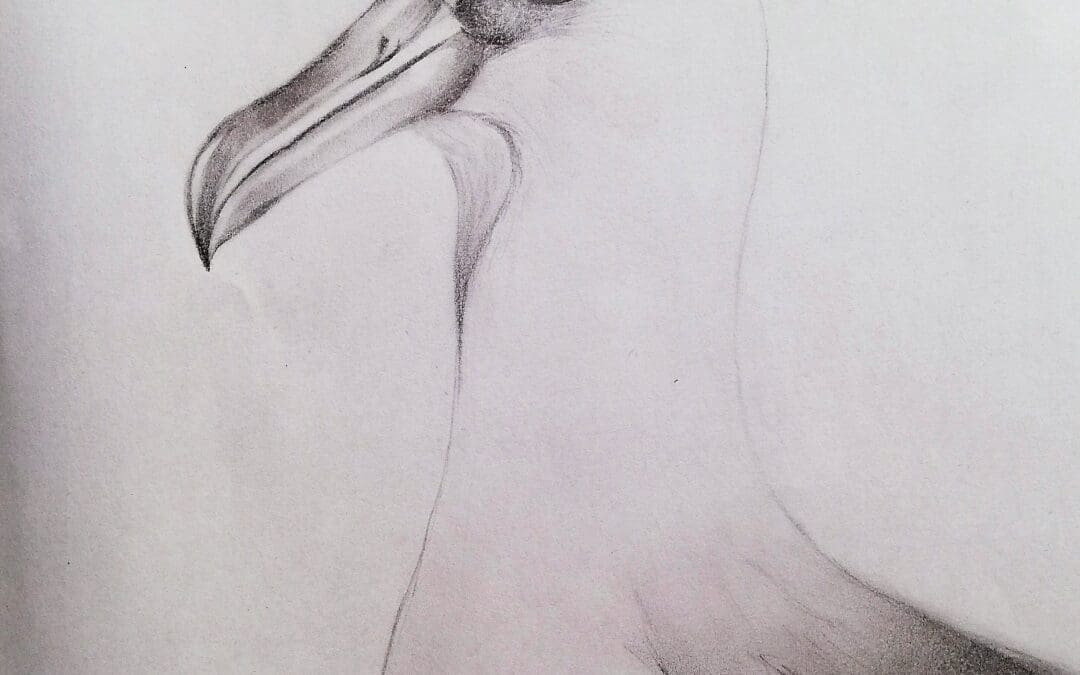

 Mariëtte Wheeler – regular freelancer for Antarctic Legacy of South Africa was born and bred a proud Pretorian girl. But my passion for the ocean developed throughout my childhood as my grandparents lived in Knysna. In my late teens I found myself staring at the ocean, wondering what it looks like beyond the horizon.
Mariëtte Wheeler – regular freelancer for Antarctic Legacy of South Africa was born and bred a proud Pretorian girl. But my passion for the ocean developed throughout my childhood as my grandparents lived in Knysna. In my late teens I found myself staring at the ocean, wondering what it looks like beyond the horizon. For the second year of my study I had a field assistant Prideel Majiedt on Marion Island and I supervised from here. One of my best round island trips was during the take-over of 2005 with Prideel(right), Marienne and John Cooper. John and I summited a few of the Marion hills. In 2006 I went for take-over to conduct more research on the Wandering Albatrosses.
For the second year of my study I had a field assistant Prideel Majiedt on Marion Island and I supervised from here. One of my best round island trips was during the take-over of 2005 with Prideel(right), Marienne and John Cooper. John and I summited a few of the Marion hills. In 2006 I went for take-over to conduct more research on the Wandering Albatrosses. On 27 February 2013, I received a phone call from Bruce Dyer asking if I would be interested to go to Marion Island as their one birder had withdrawn from the team. I had 24 hours to decide! Fortunately the timing was perfect as my contract with EWT was until the end of February. In April 2013 I sailed again to Marion Island as Department of Environment Affairs: Oceans and Coasts birder. What an amazing feeling to see Marion Island again! I therefore had the opportunity to travel on both the SA Agulhas and SA Agulhas II and to live in both the old base and the new base. My previous year on the island was during the construction time, so as a member of M70 I first experienced the isolation of only seeing the “Red Taxi II” a year later. I treasure memories of braai evenings in the braai room with its beautiful views, theme parties and unique hut radio communication.
On 27 February 2013, I received a phone call from Bruce Dyer asking if I would be interested to go to Marion Island as their one birder had withdrawn from the team. I had 24 hours to decide! Fortunately the timing was perfect as my contract with EWT was until the end of February. In April 2013 I sailed again to Marion Island as Department of Environment Affairs: Oceans and Coasts birder. What an amazing feeling to see Marion Island again! I therefore had the opportunity to travel on both the SA Agulhas and SA Agulhas II and to live in both the old base and the new base. My previous year on the island was during the construction time, so as a member of M70 I first experienced the isolation of only seeing the “Red Taxi II” a year later. I treasure memories of braai evenings in the braai room with its beautiful views, theme parties and unique hut radio communication.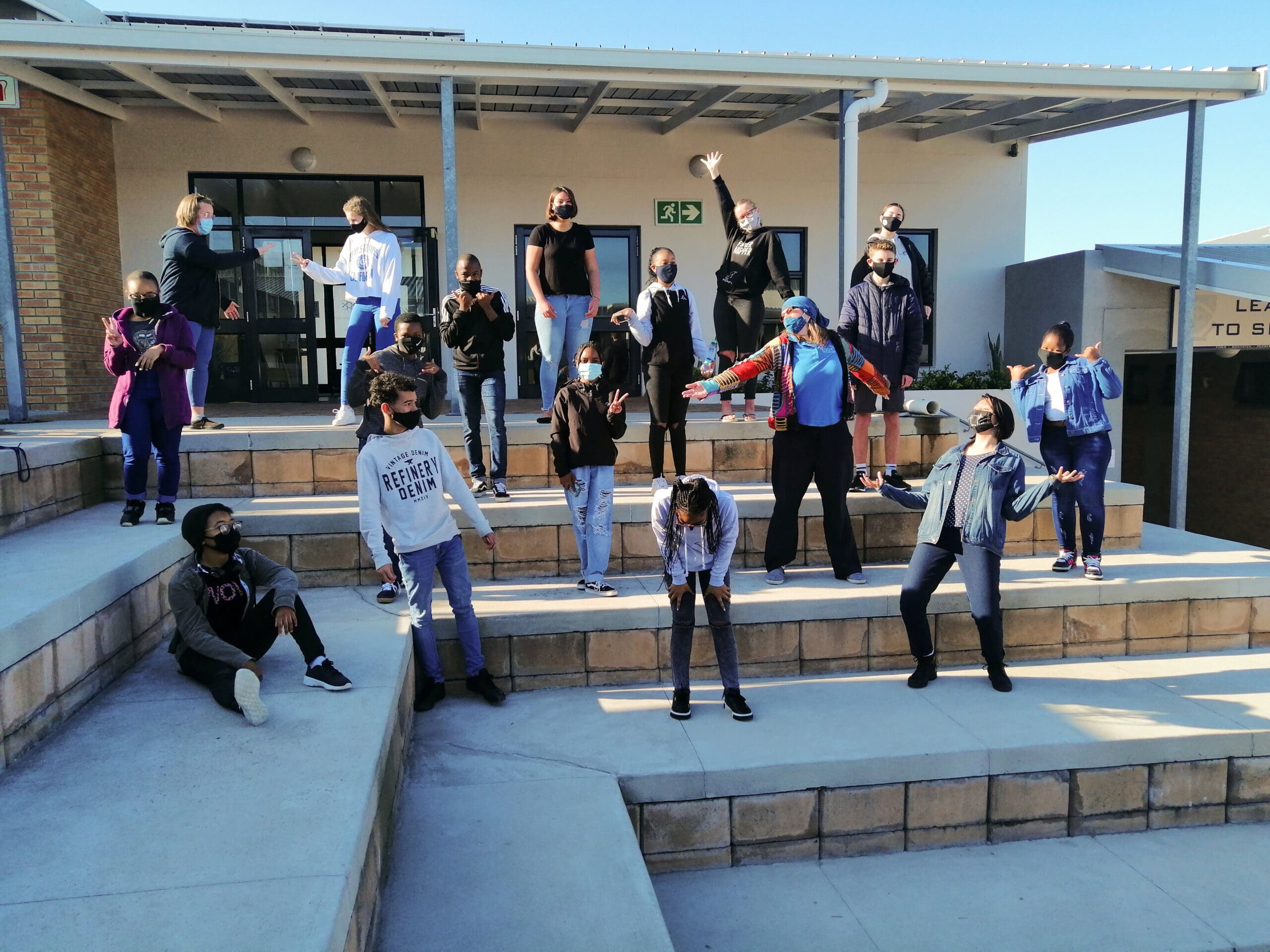 In 2016 I took up a post at Protea Heights Academy in Protea Heights (PHA), Brackenfell teaching Natural Sciences and Life Sciences. In 2018 I taught at a rural community school, Sterkspruit Christian Private School in what used to be Transkei. I lived in the picturesque Lady Grey at the foothills of the Drakensberg. In October 2018 I returned to PHA teaching Life Sciences.
In 2016 I took up a post at Protea Heights Academy in Protea Heights (PHA), Brackenfell teaching Natural Sciences and Life Sciences. In 2018 I taught at a rural community school, Sterkspruit Christian Private School in what used to be Transkei. I lived in the picturesque Lady Grey at the foothills of the Drakensberg. In October 2018 I returned to PHA teaching Life Sciences.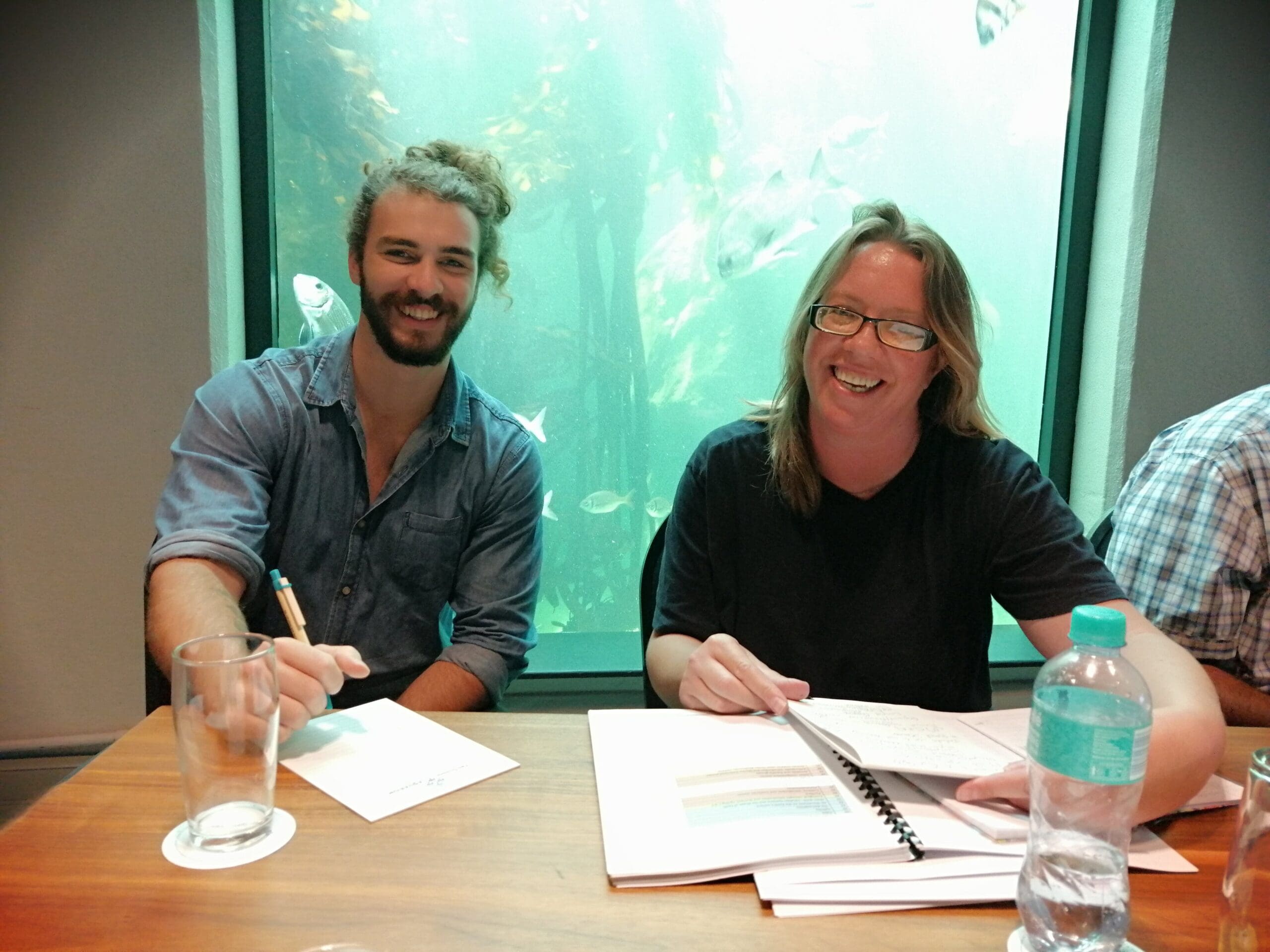 From 2020 PHA is one of the 6 nodal schools for the new Gr 10 to 12 subject Marine Sciences, in collaboration with Two Oceans Aquarium (the writers of the curriculum). I am now the departmental head of Marine Sciences, with Shaun Seaward as colleague. I am also teaching Life Sciences. Recently my learners were involved in the first World Albatross Day. Unfortunately due to COVID, plans that John Cooper and I had to get the entire school involved could not realise. With the international Great Albicake Bake Off as inspiration, I asked my learners (who were all still in lockdown) to make, bake, draw or paint anything creative provided that there was at least one albatross on. In this way they all learned more about albatrosses and enjoyed being creative. Antarctic Legacy of South Africa (ALSA) and the Agreement on the Conservation of Albatrosses and Petrels (ACAP) sponsored posters and books as prizes.
From 2020 PHA is one of the 6 nodal schools for the new Gr 10 to 12 subject Marine Sciences, in collaboration with Two Oceans Aquarium (the writers of the curriculum). I am now the departmental head of Marine Sciences, with Shaun Seaward as colleague. I am also teaching Life Sciences. Recently my learners were involved in the first World Albatross Day. Unfortunately due to COVID, plans that John Cooper and I had to get the entire school involved could not realise. With the international Great Albicake Bake Off as inspiration, I asked my learners (who were all still in lockdown) to make, bake, draw or paint anything creative provided that there was at least one albatross on. In this way they all learned more about albatrosses and enjoyed being creative. Antarctic Legacy of South Africa (ALSA) and the Agreement on the Conservation of Albatrosses and Petrels (ACAP) sponsored posters and books as prizes.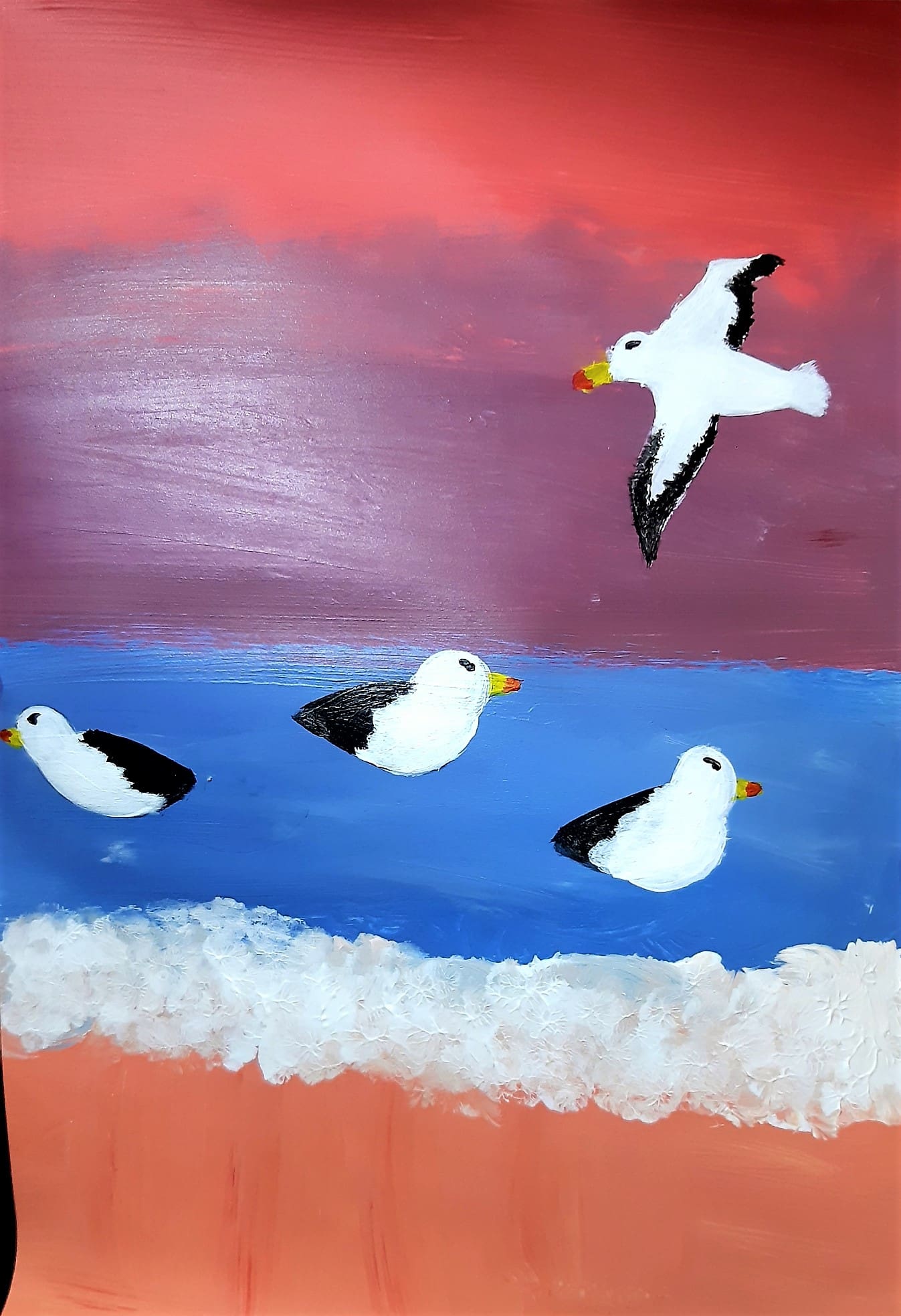

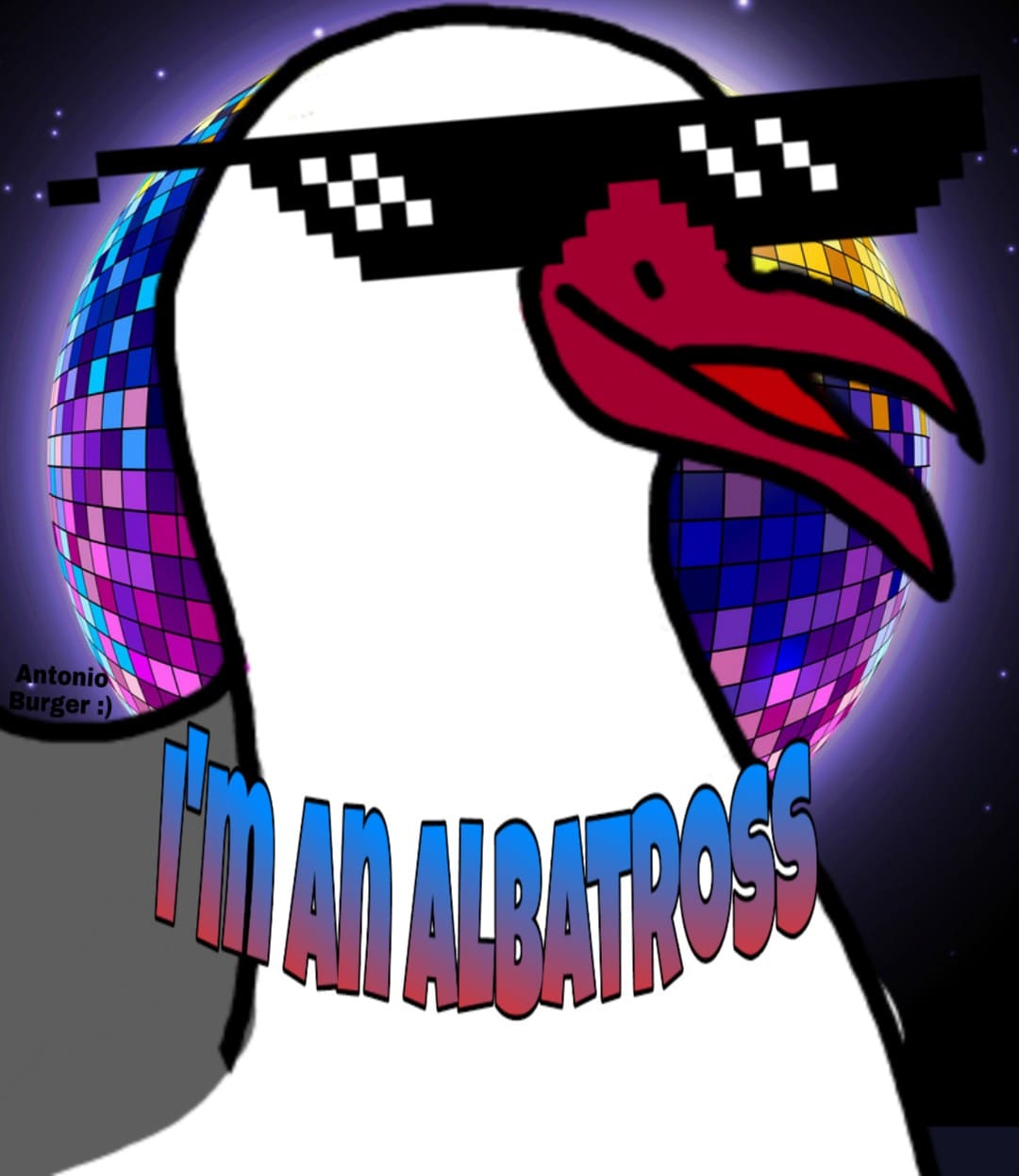
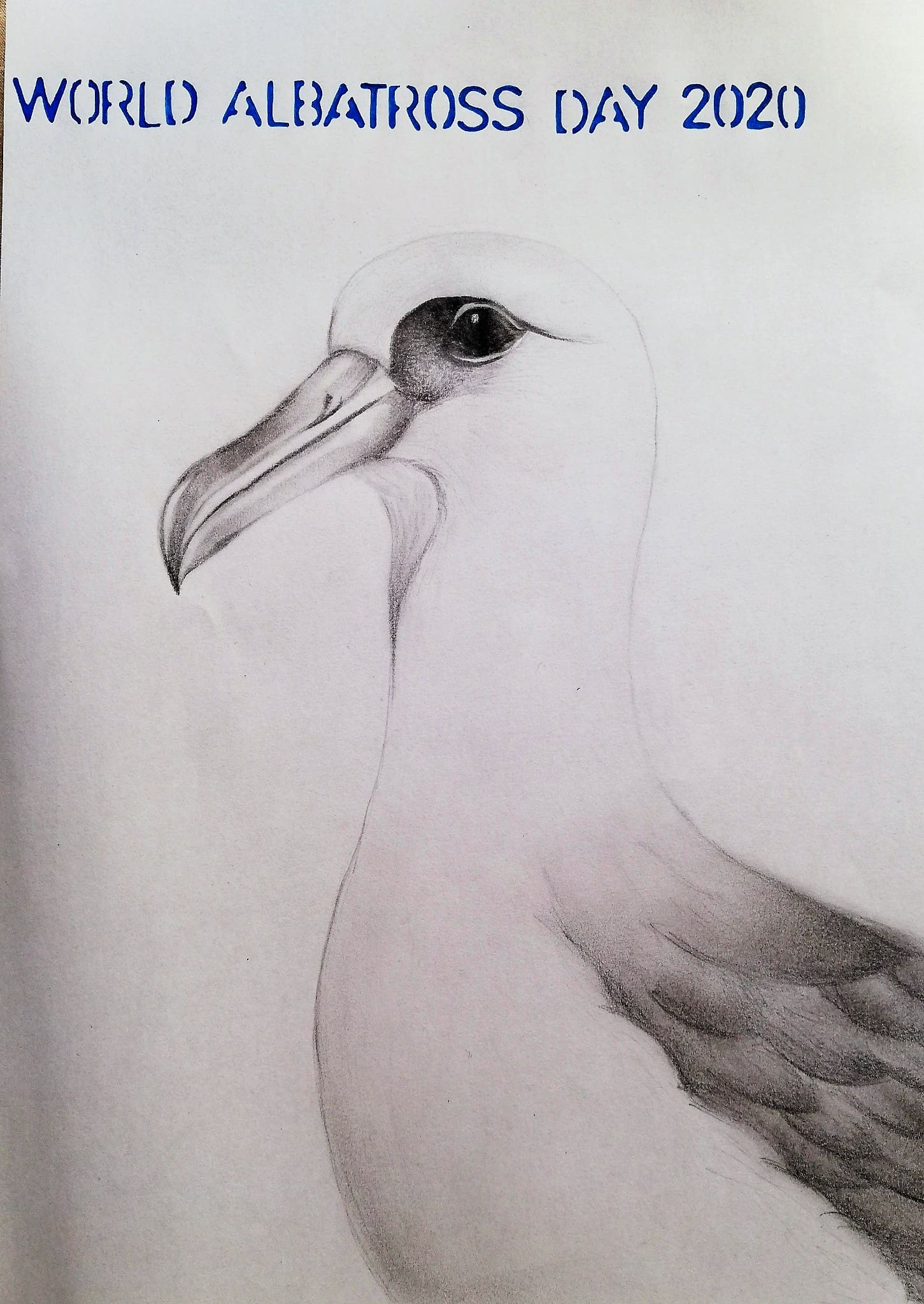


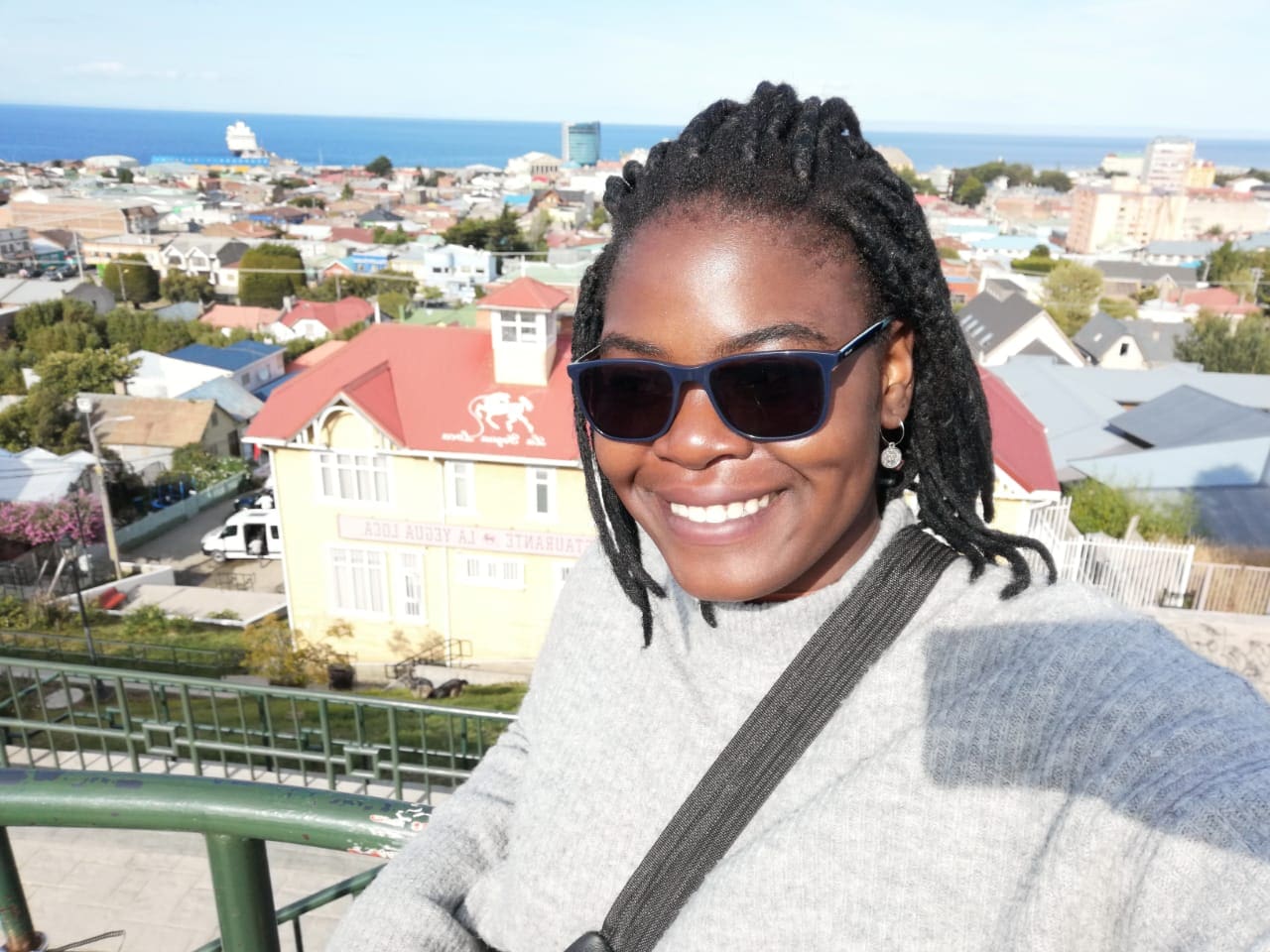
 Rudzani Silima (Rudzi) have from a young age, always known that she would pursue a career in environmental conservation and science. “I grew up in the very small town of
Rudzani Silima (Rudzi) have from a young age, always known that she would pursue a career in environmental conservation and science. “I grew up in the very small town of 
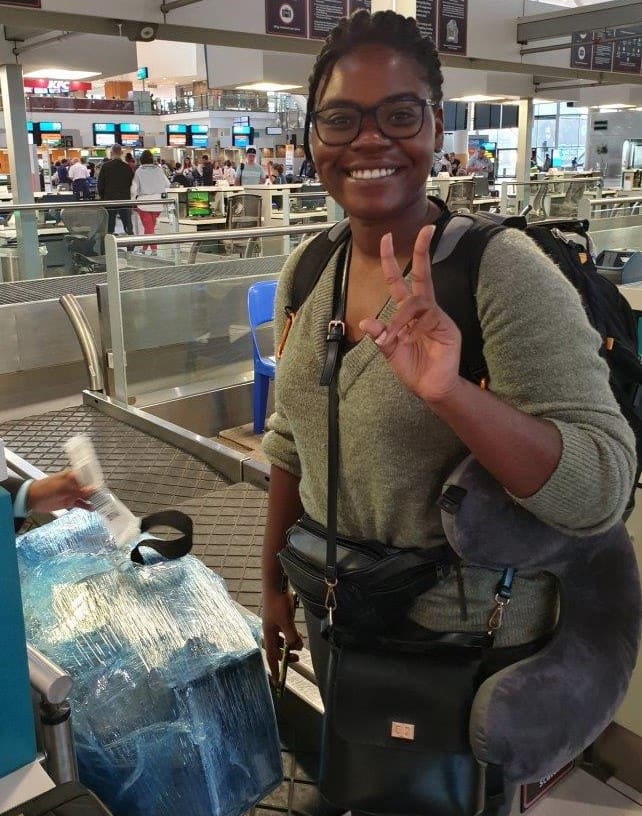

 (l-r: Rudzi and Nompumelelo(DEFF),weighing my luggage, Ria Olivier(ALSA) sent me on my trip, during transit I said goodbye to my family) To date I have attained a collection of prizes from my university and conferences, further validating my determination to advocate for the oceans and our planet. As the best
(l-r: Rudzi and Nompumelelo(DEFF),weighing my luggage, Ria Olivier(ALSA) sent me on my trip, during transit I said goodbye to my family) To date I have attained a collection of prizes from my university and conferences, further validating my determination to advocate for the oceans and our planet. As the best 
 The
The 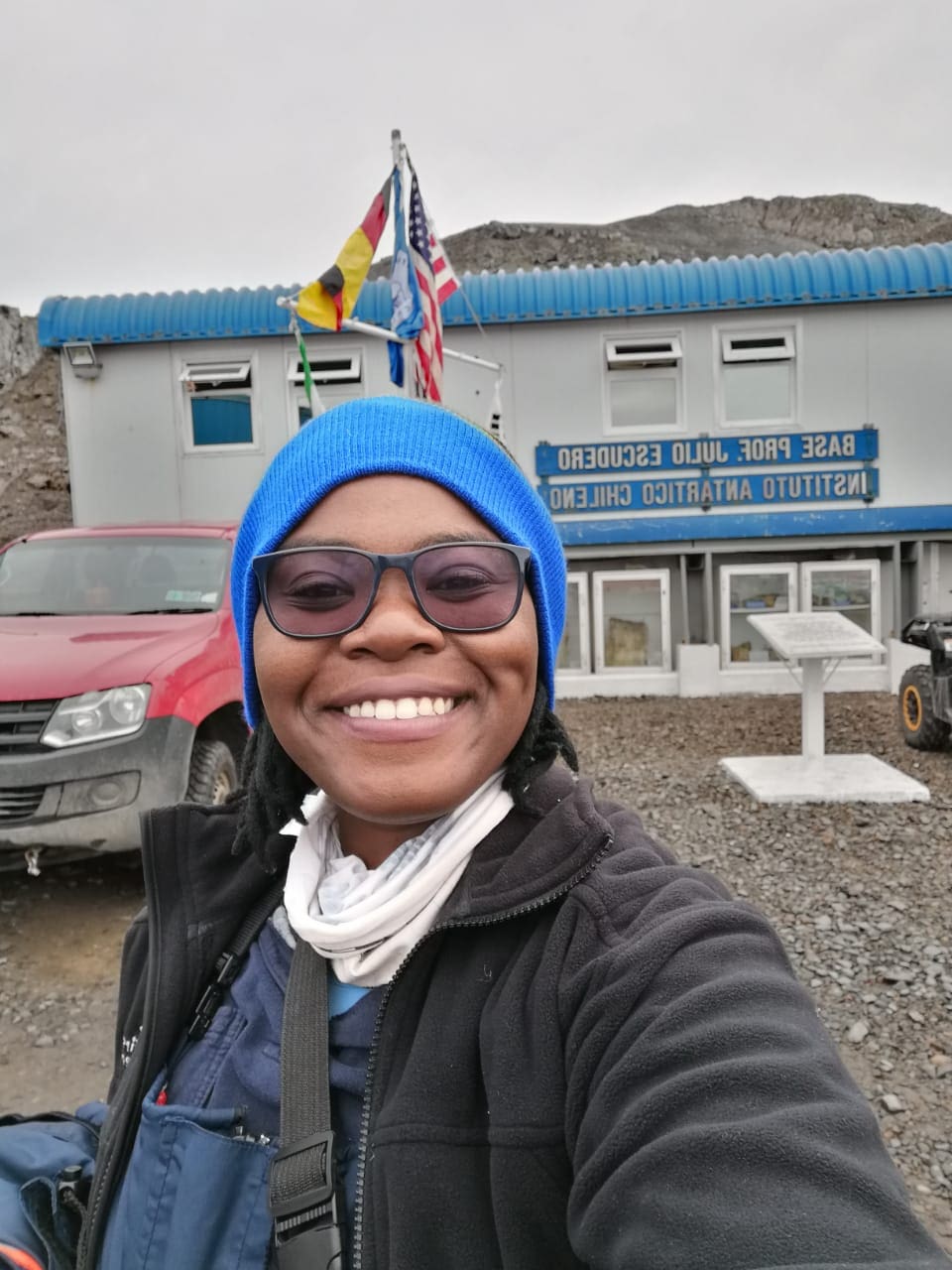
 There are many controversies related to climate change today, however, in Antarctica there is physical evidence that climate change is happening right now and not in some distant future. Therefore, the formation of the Antarctic Youth Coalition couldn’t be more perfectly timed. The AYC, hence from now on aims to make accessible the very important science done in the Southern Ocean to everyday citizens in the five gateway cities but also all around the world.
There are many controversies related to climate change today, however, in Antarctica there is physical evidence that climate change is happening right now and not in some distant future. Therefore, the formation of the Antarctic Youth Coalition couldn’t be more perfectly timed. The AYC, hence from now on aims to make accessible the very important science done in the Southern Ocean to everyday citizens in the five gateway cities but also all around the world.  “Therefore, all of us, common or otherwise, share the responsibility for a healthy, thriving Antarctica and our whole planet! My parting word, specifically to us young people is to never give up on yourself and never give up on your dreams. All of us have the potential to change the world in our own very unique and exciting ways”
“Therefore, all of us, common or otherwise, share the responsibility for a healthy, thriving Antarctica and our whole planet! My parting word, specifically to us young people is to never give up on yourself and never give up on your dreams. All of us have the potential to change the world in our own very unique and exciting ways”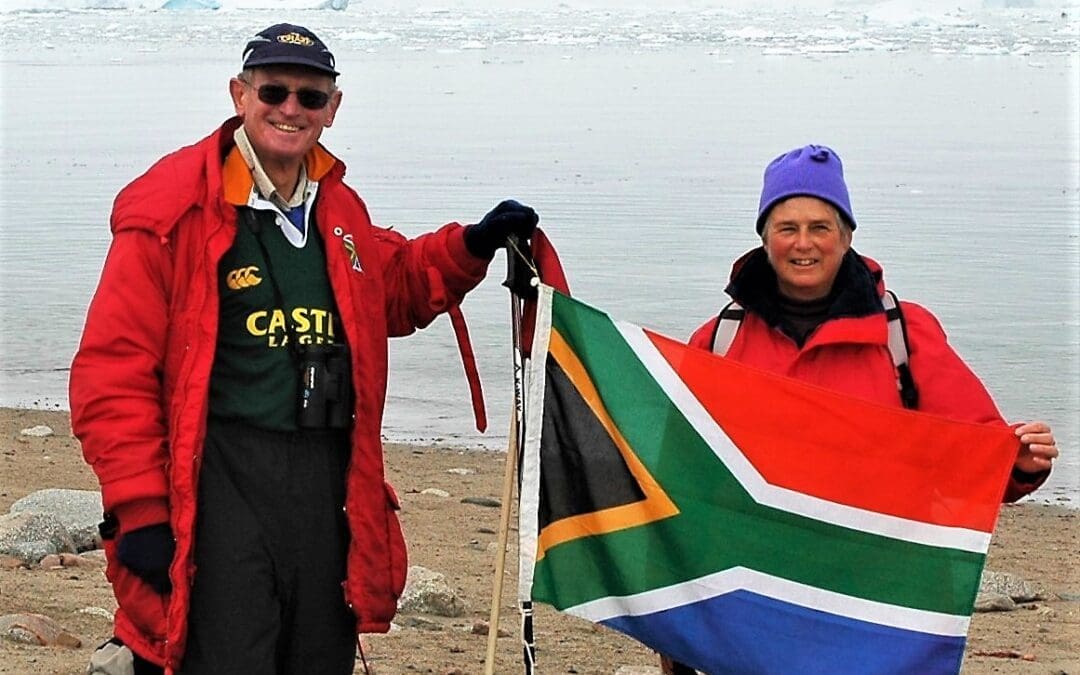
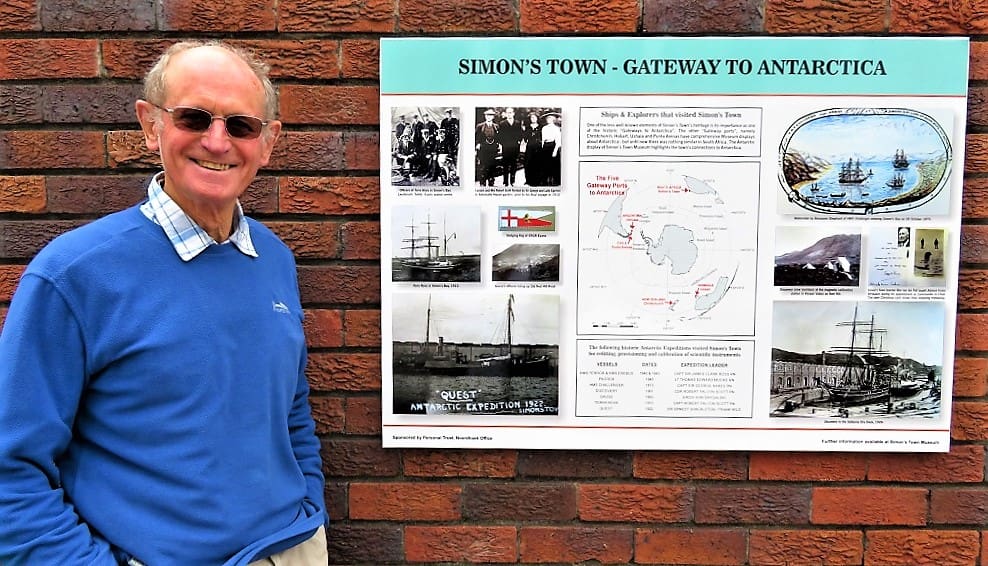 Sydney Cullis’s hobby turned out to be a bonus for the preservation of the Legacy of South Africa in the Antarctic region. ” It all started in 1993 when our son, James, was in Matric he had to produce a talk for one of the school societies and, as the Fiennes/Stroud “In the footsteps of Scott” expedition to cross Antarctica unsupported was in the news, he decided to choose it as his subject. To provide him with some guidance I started reading about the history of Antarctic exploration – and the more I read, the more fascinating I found it – and the more South African connections I came across. I was probably more receptive than I might otherwise have been as the first film I ever went to see (aged 6) was
Sydney Cullis’s hobby turned out to be a bonus for the preservation of the Legacy of South Africa in the Antarctic region. ” It all started in 1993 when our son, James, was in Matric he had to produce a talk for one of the school societies and, as the Fiennes/Stroud “In the footsteps of Scott” expedition to cross Antarctica unsupported was in the news, he decided to choose it as his subject. To provide him with some guidance I started reading about the history of Antarctic exploration – and the more I read, the more fascinating I found it – and the more South African connections I came across. I was probably more receptive than I might otherwise have been as the first film I ever went to see (aged 6) was 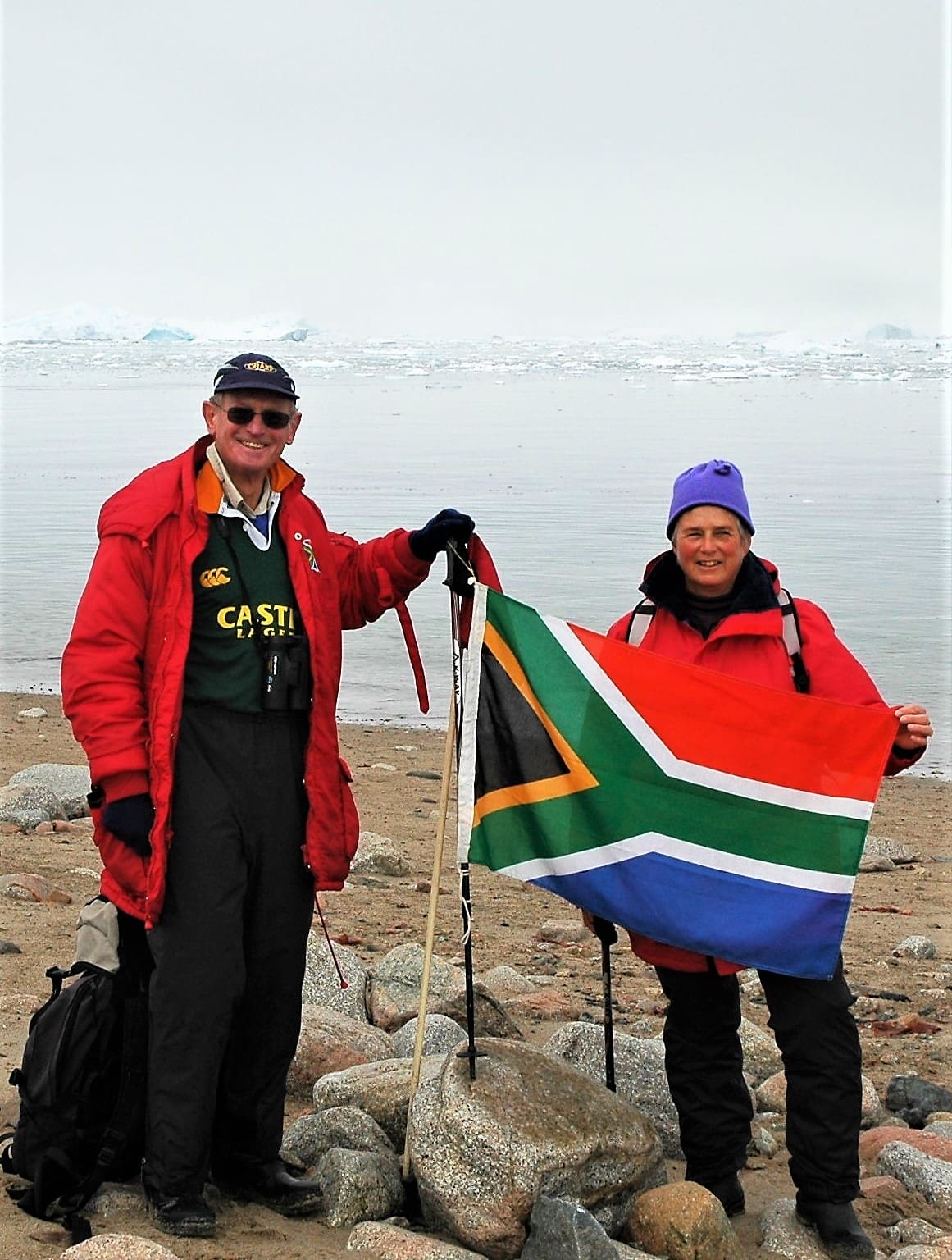
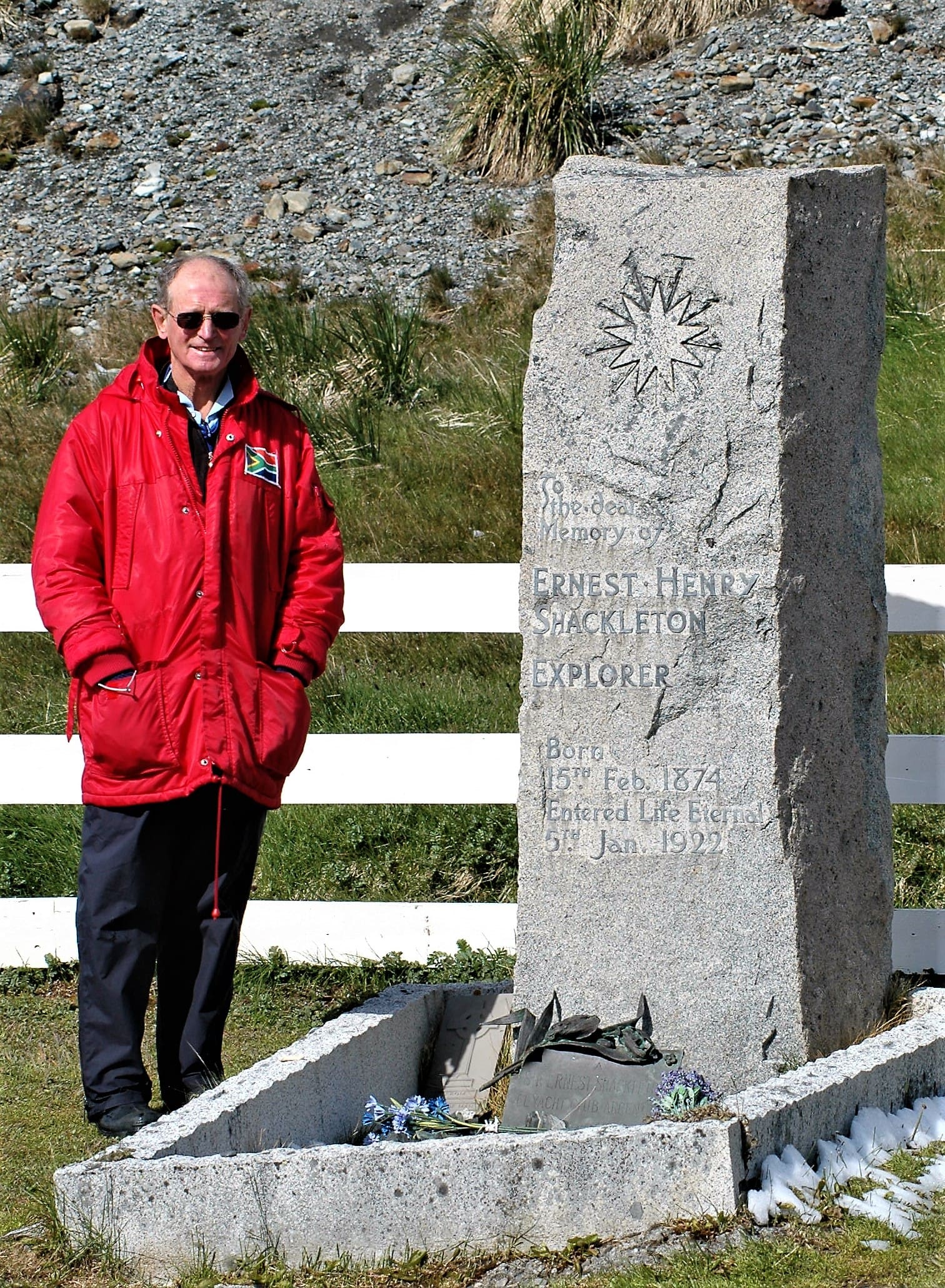

 Initially my interest was in trawling through the published accounts of the Heroic Era expeditions for South African connections-and discovered that, not only did many of the expeditions use Cape Town or Simon’s Town as a revictualling port, but many of the members of those expeditions had spent time in South Africa either before or after their visits to Antarctica – Maclear (Challenger), Scott, Shackleton, Wild, Joyce, Ferrar (Discovery), Pirie (Scotia), Davis (Nimrod),Oates, Mears (
Initially my interest was in trawling through the published accounts of the Heroic Era expeditions for South African connections-and discovered that, not only did many of the expeditions use Cape Town or Simon’s Town as a revictualling port, but many of the members of those expeditions had spent time in South Africa either before or after their visits to Antarctica – Maclear (Challenger), Scott, Shackleton, Wild, Joyce, Ferrar (Discovery), Pirie (Scotia), Davis (Nimrod),Oates, Mears (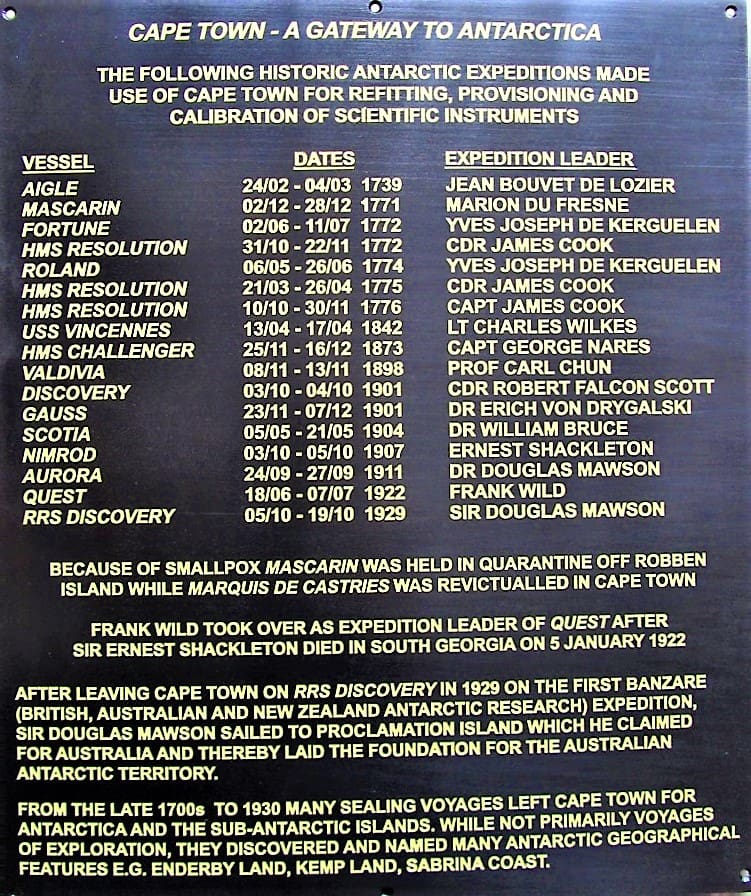
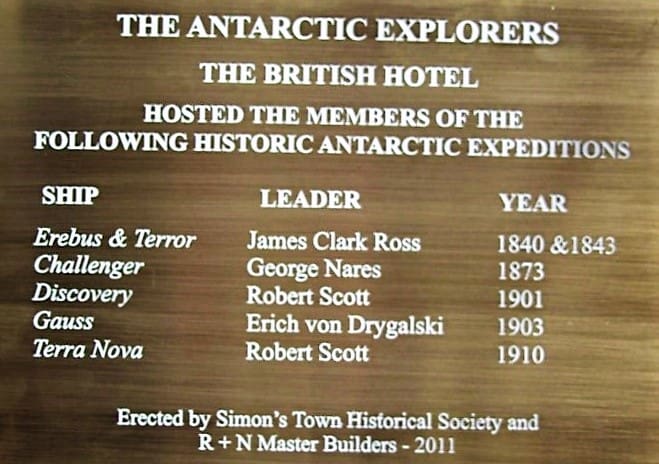
 (Above: Cape Town Plaque, Plaque outside British Hotel and at Jubilee Square, Simon’s Town) I therefore tried to find ways of highlighting the concept that Cape Town and Simon’s Town were “Gateways to Antarctica” – by creating presentations to historical societies, U3A’s, UCT Summer School, and Ship Societies both in Cape Town and Durban. I also facilitated the erection of plaques listing the Antarctic expeditions that passed through Simon’s Town in Jubilee Square and the British Hotel there. Another plaque containing the list of the 17 historic Antarctic expeditions that had made use of Cape Town was made with a view to it being erected somewhere in the V & A Waterfront – but unfortunately it is still gathering dust somewhere there.
(Above: Cape Town Plaque, Plaque outside British Hotel and at Jubilee Square, Simon’s Town) I therefore tried to find ways of highlighting the concept that Cape Town and Simon’s Town were “Gateways to Antarctica” – by creating presentations to historical societies, U3A’s, UCT Summer School, and Ship Societies both in Cape Town and Durban. I also facilitated the erection of plaques listing the Antarctic expeditions that passed through Simon’s Town in Jubilee Square and the British Hotel there. Another plaque containing the list of the 17 historic Antarctic expeditions that had made use of Cape Town was made with a view to it being erected somewhere in the V & A Waterfront – but unfortunately it is still gathering dust somewhere there. Another source of information has been the study of newspaper reports of their visits – thanks to the South African library. One such report on the departure of Aurora from Cape Town in 1911 mentioned how one of the huskies had fallen overboard and had been rescued by a passing dinghy. This enabled the episode to be recorded in a painting of her departure by Jeremy Day which was commissioned to celebrate the centenary of Aurora’s visit to Cape Town. In 2015 John Cooper had alerted me to the risk that the series of Peter Bilas paintings of Antarctic ships on SA Agulhas I might get lost or damaged when being transferred to the new
Another source of information has been the study of newspaper reports of their visits – thanks to the South African library. One such report on the departure of Aurora from Cape Town in 1911 mentioned how one of the huskies had fallen overboard and had been rescued by a passing dinghy. This enabled the episode to be recorded in a painting of her departure by Jeremy Day which was commissioned to celebrate the centenary of Aurora’s visit to Cape Town. In 2015 John Cooper had alerted me to the risk that the series of Peter Bilas paintings of Antarctic ships on SA Agulhas I might get lost or damaged when being transferred to the new 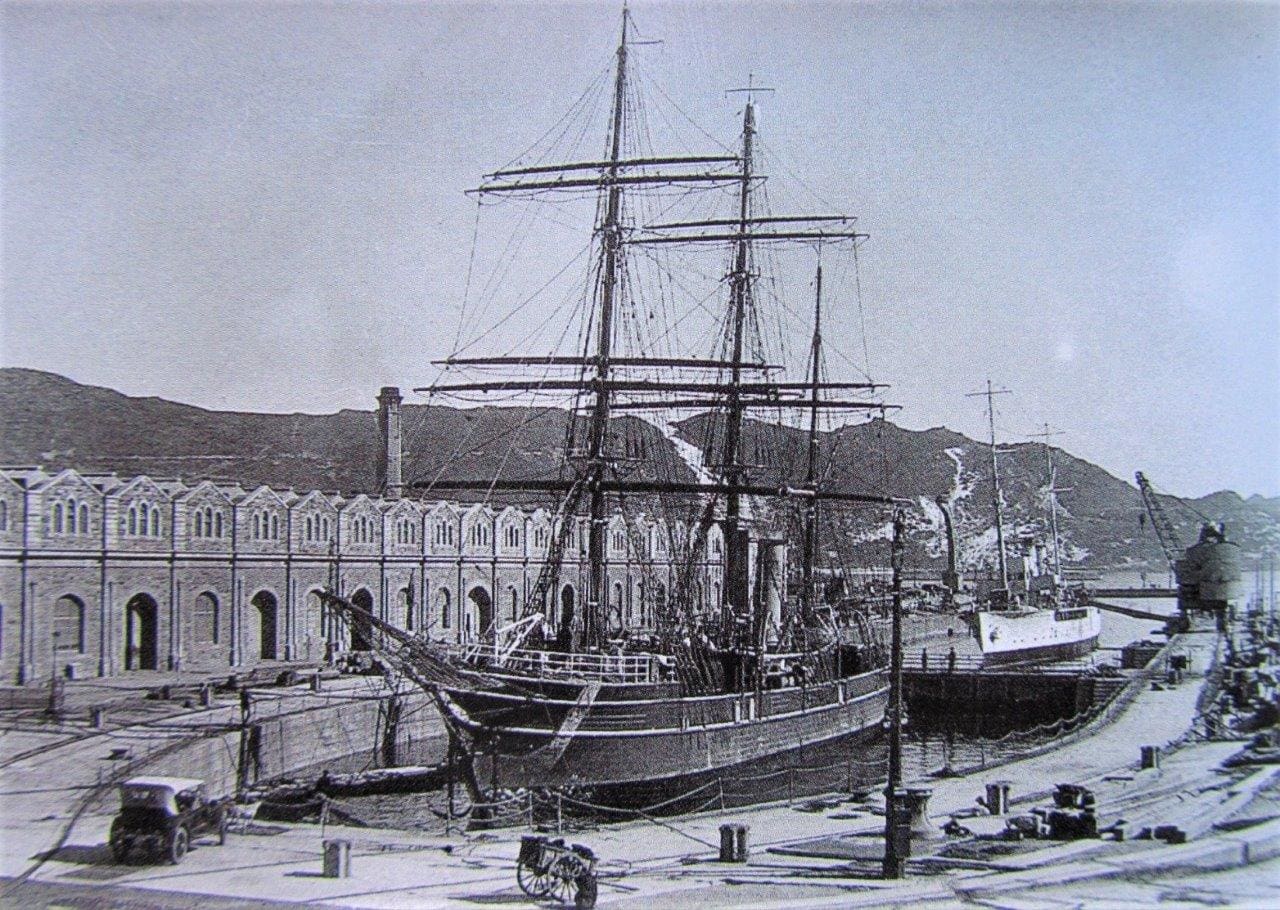
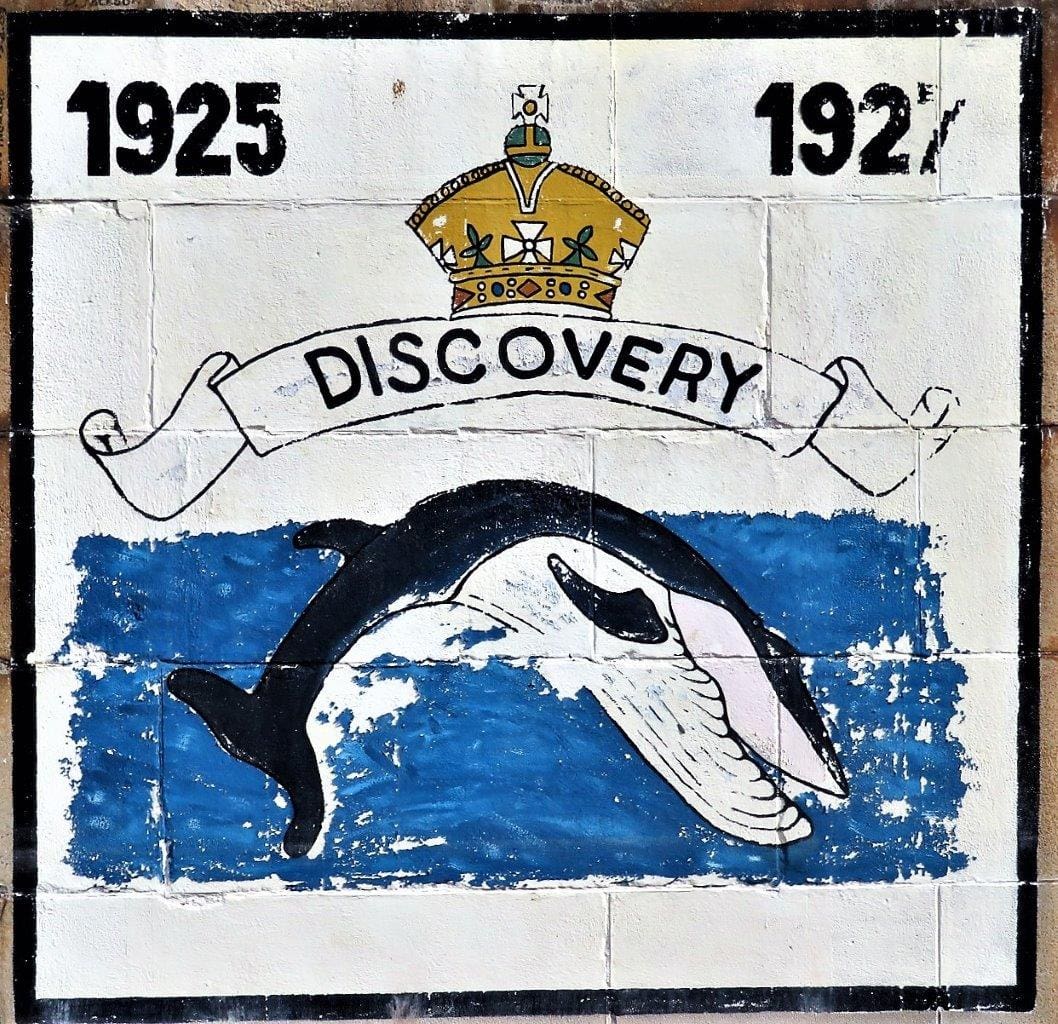 I have enjoyed the opportunity whenever Antarctic historians have visited Cape Town to show them our “Antarctic sites” – most memorably when showing Bob Headland around Simon’s town we discovered that
I have enjoyed the opportunity whenever Antarctic historians have visited Cape Town to show them our “Antarctic sites” – most memorably when showing Bob Headland around Simon’s town we discovered that 
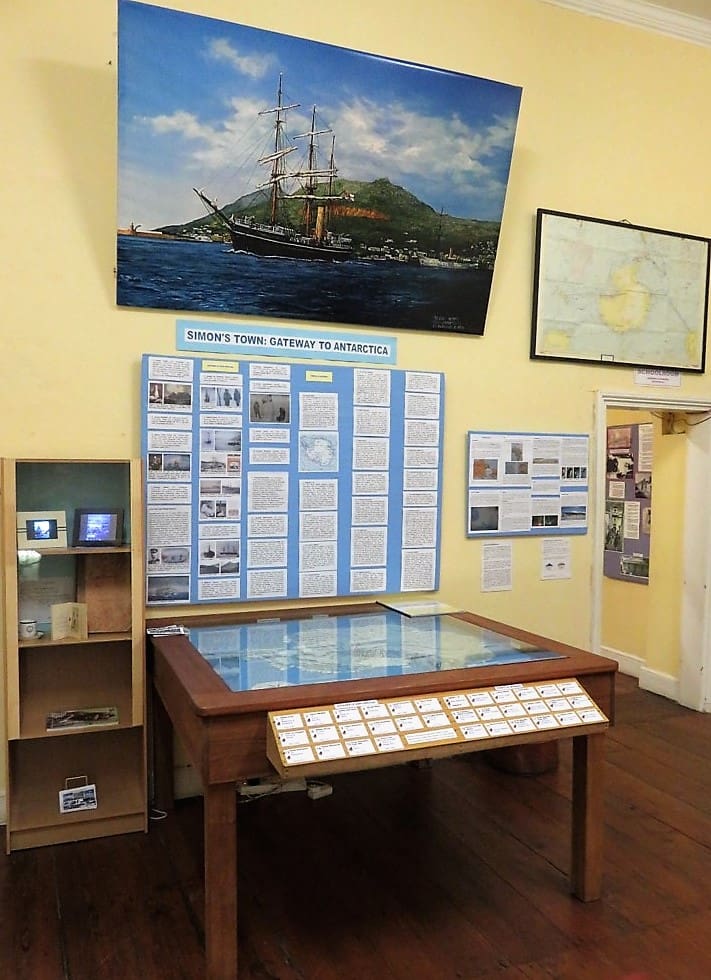
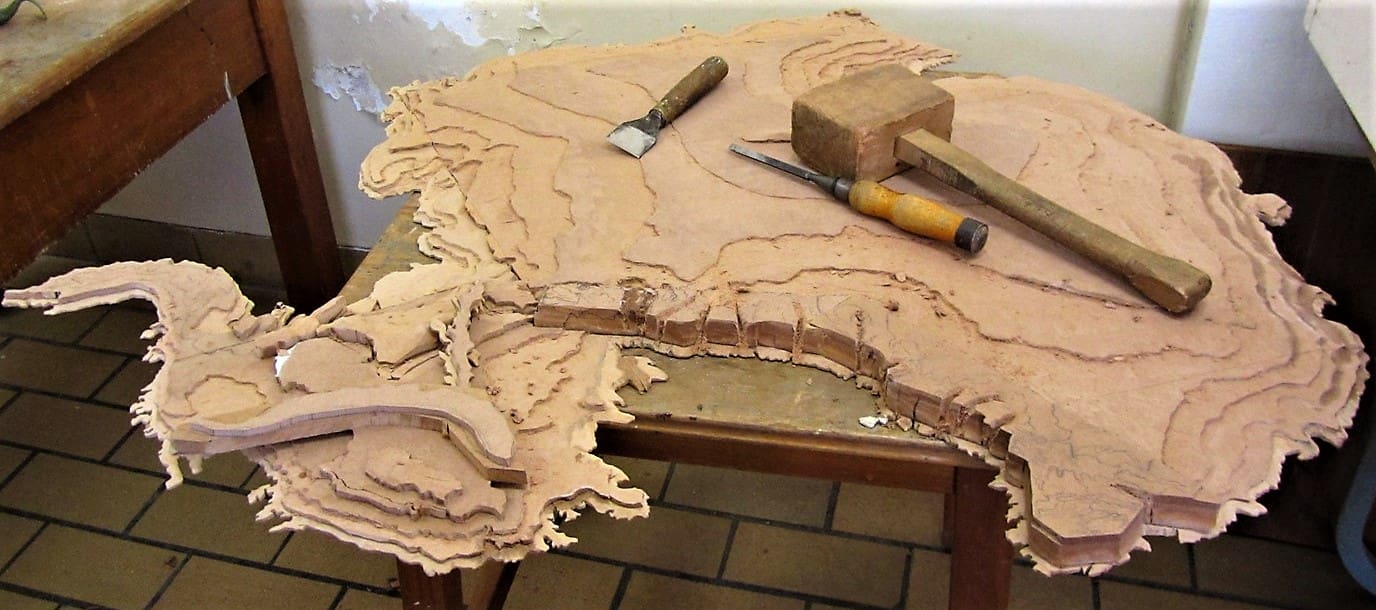 (above: Display at Simon’s Town Museum) The significant anniversaries of the historic Antarctic expeditions have been useful to raise awareness of them in South Africa. In December 2021 it will be 250 years since
(above: Display at Simon’s Town Museum) The significant anniversaries of the historic Antarctic expeditions have been useful to raise awareness of them in South Africa. In December 2021 it will be 250 years since 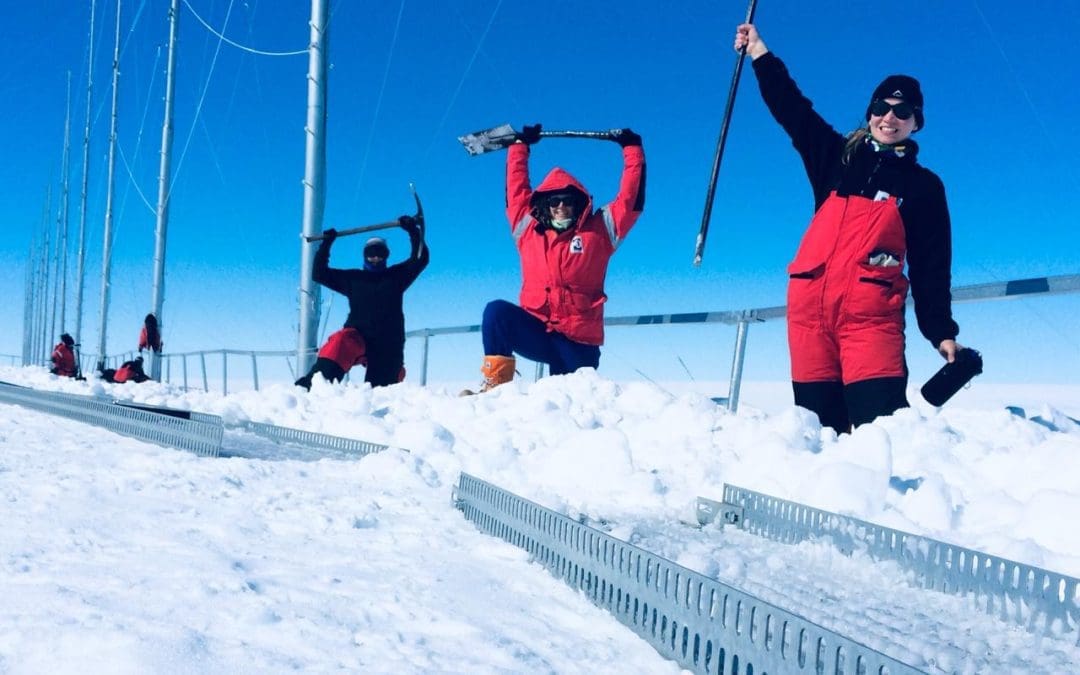

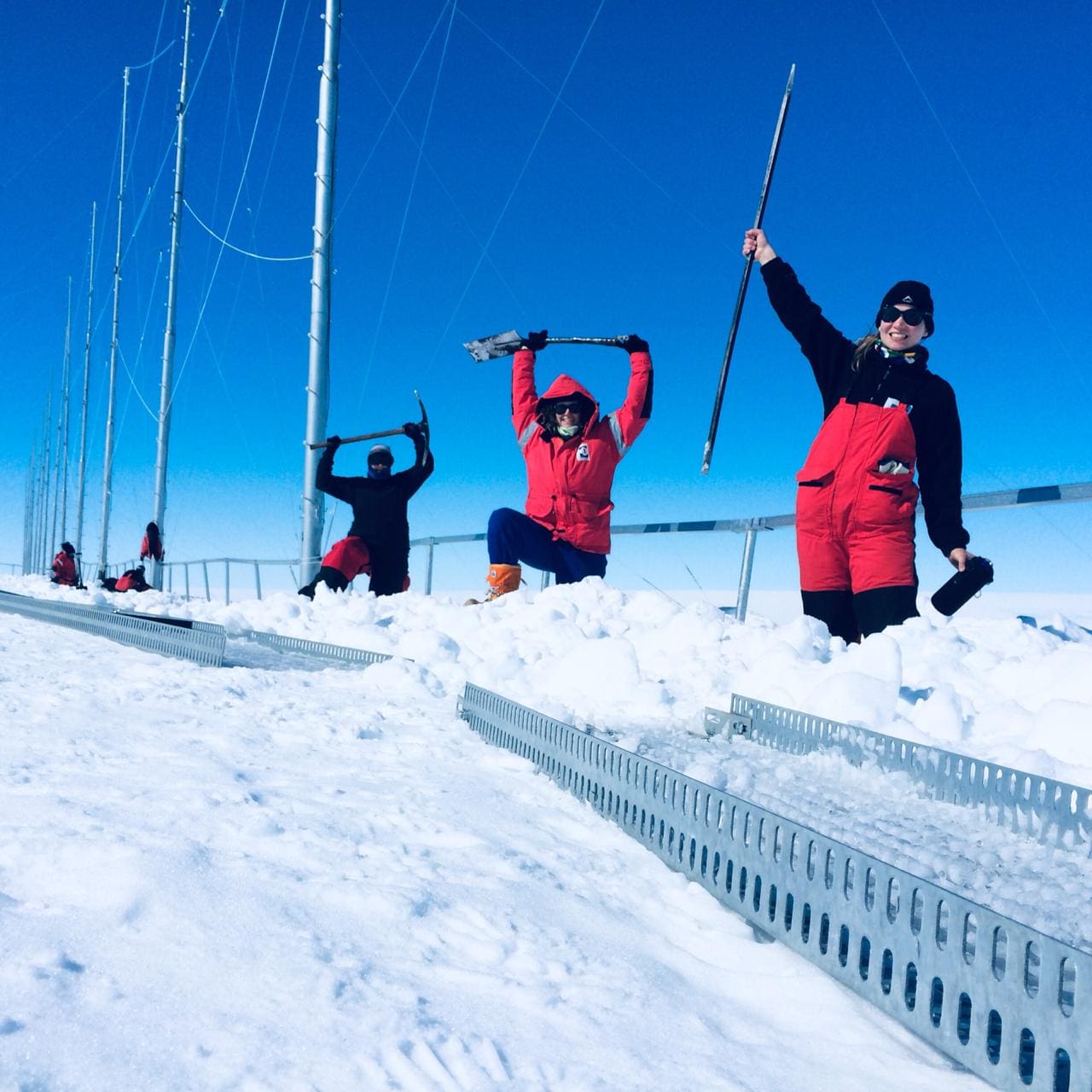
 Jess completed her Master’s Degree in Environmental Management in 2012 and started working in the corporate consulting world. She relocated to Cape Town in 2014 and got involved as a volunteer firefighter and started experimenting more with creative hobbies like drawing and painting. In 2018 she was offered a volunteer position for the summer takeover to
Jess completed her Master’s Degree in Environmental Management in 2012 and started working in the corporate consulting world. She relocated to Cape Town in 2014 and got involved as a volunteer firefighter and started experimenting more with creative hobbies like drawing and painting. In 2018 she was offered a volunteer position for the summer takeover to 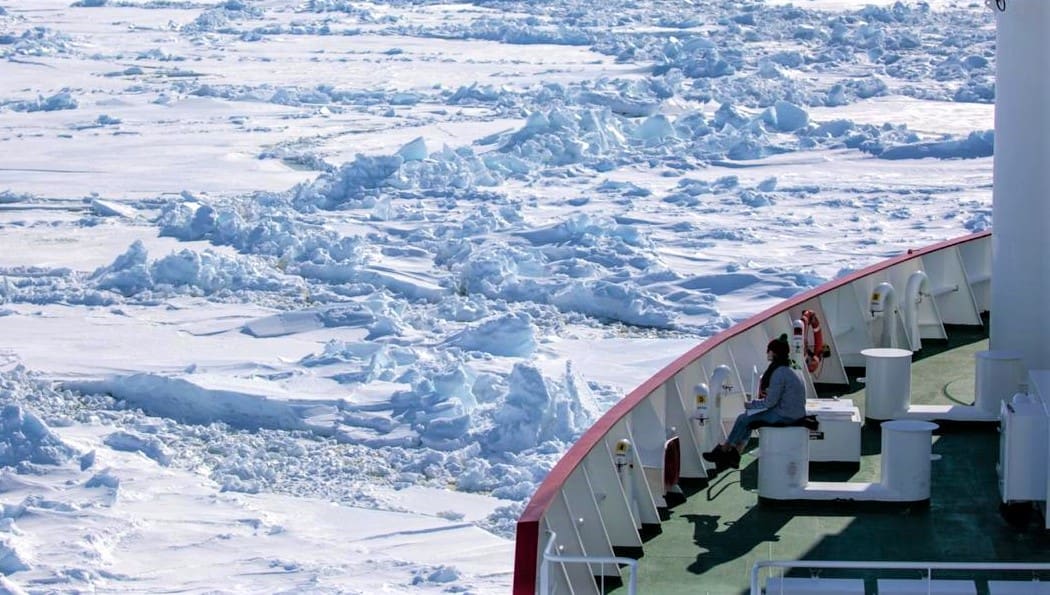 “Lacking a good camera but having a desire to experience this incredible place to the fullest, and knowing that drawing is a fantastic meditation; I treated myself to a blank sketchbook and some fine-liner pens before departing on our journey. I like creative expression. It helps me clear my head and experience a place or a situation more deeply.”
“Lacking a good camera but having a desire to experience this incredible place to the fullest, and knowing that drawing is a fantastic meditation; I treated myself to a blank sketchbook and some fine-liner pens before departing on our journey. I like creative expression. It helps me clear my head and experience a place or a situation more deeply.”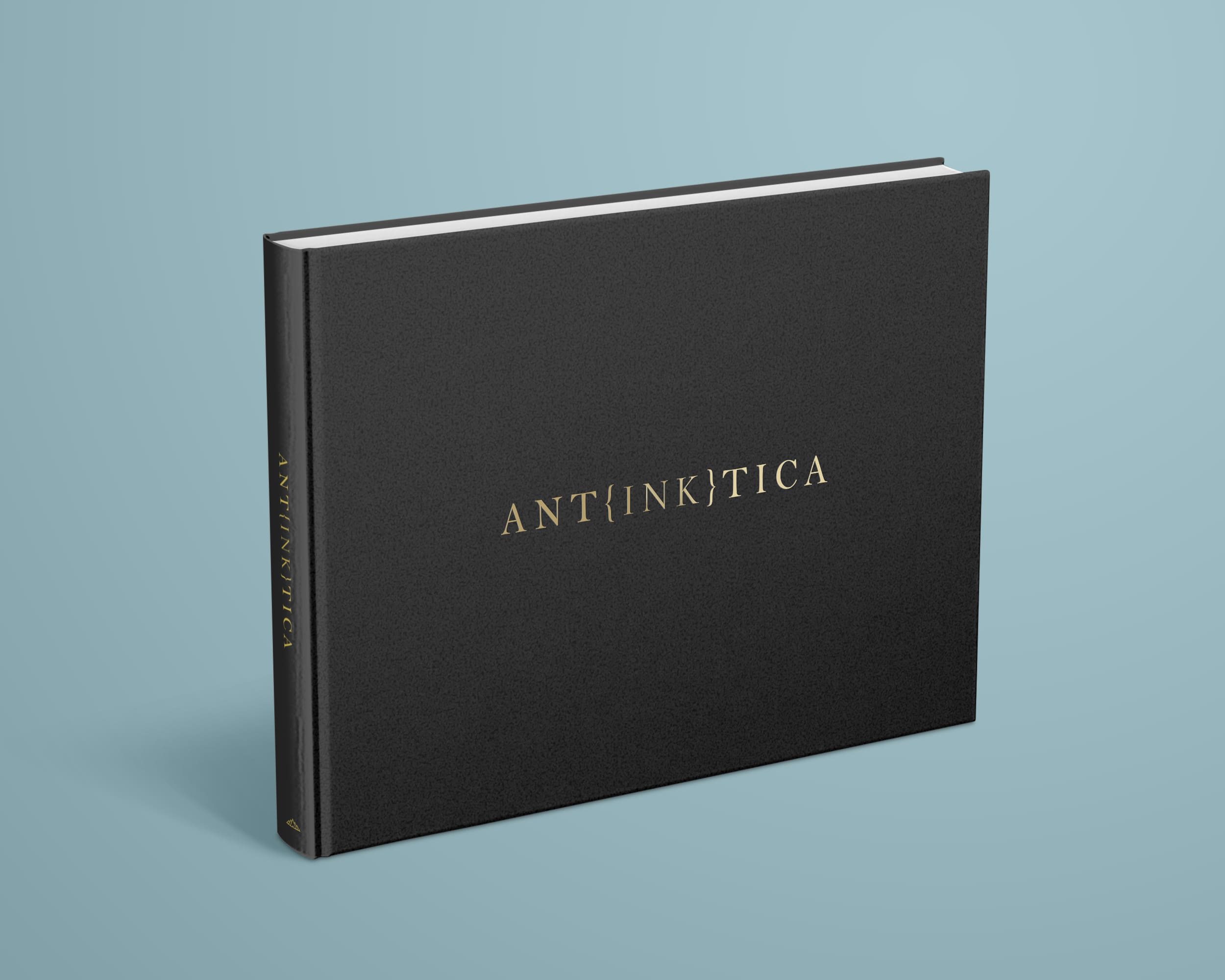
 ANT{INK}TICA : There were initially no plans to publicise her art, but the opportunity was presented by the archivist at Antarctic Legacy of South Africa (ALSA) to publish it in a coffee table book. This is the first art publication from the Antarctic Legacy of South Africa. The book consists of 49 sketches and 3 poems, depicting scenes experienced by Jess during her Antarctic Expedition. Only 100 publications are available and will be signed by the artist. This publication will be a unique addition to Art Book Collections and Antarctic publications.
ANT{INK}TICA : There were initially no plans to publicise her art, but the opportunity was presented by the archivist at Antarctic Legacy of South Africa (ALSA) to publish it in a coffee table book. This is the first art publication from the Antarctic Legacy of South Africa. The book consists of 49 sketches and 3 poems, depicting scenes experienced by Jess during her Antarctic Expedition. Only 100 publications are available and will be signed by the artist. This publication will be a unique addition to Art Book Collections and Antarctic publications. 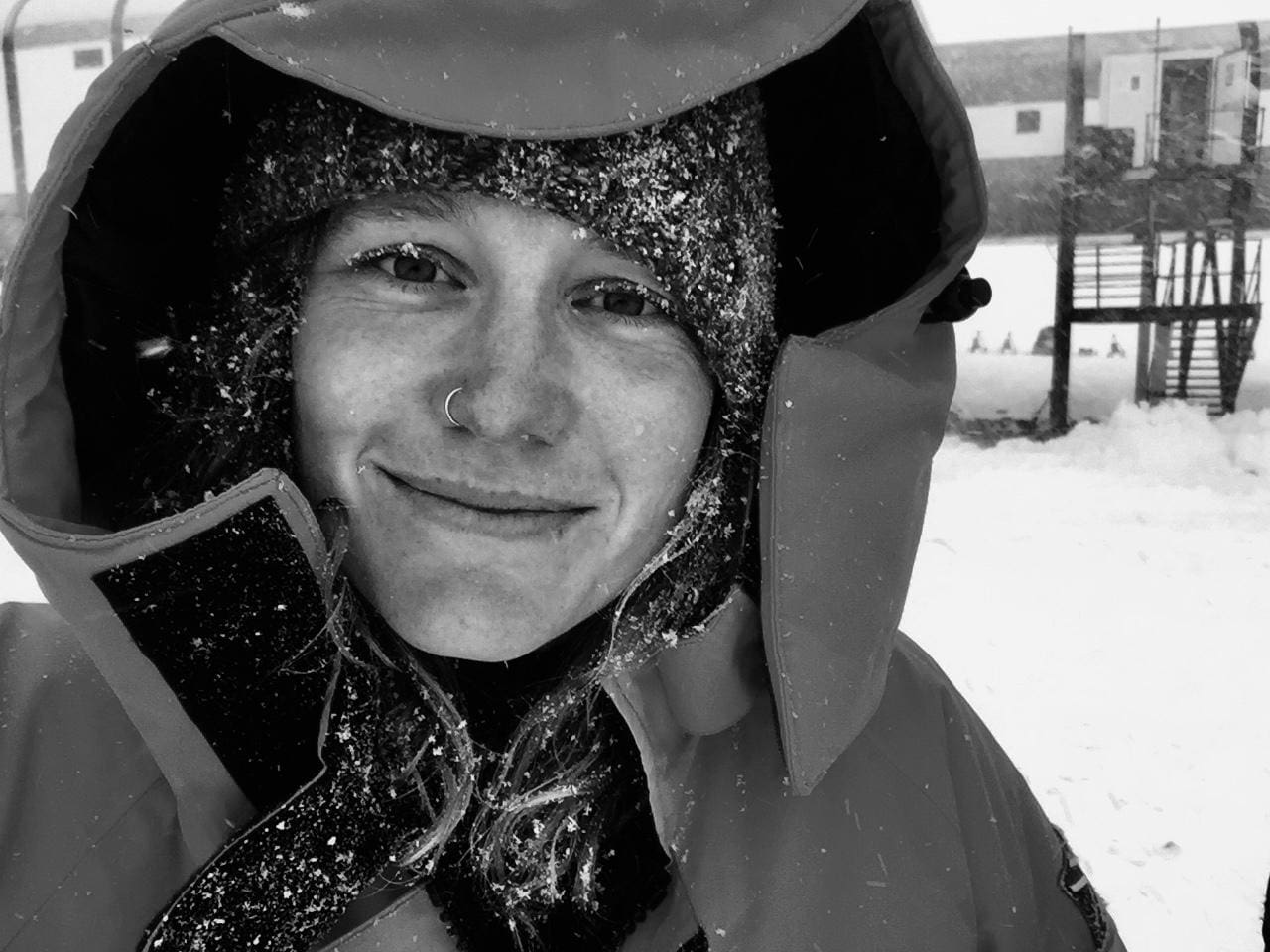 Jess’ message to you: “To get out there, challenge yourself. To believe in yourself and your ability. To try new things. Try harder, to judge yourself less and to never give up. To appreciate the experiences and lessons you’ve been endowed with and to help others along their way”. . Jess’ hope is that this book will shine a light for you, to show you that anything is possible. That persistence pays. Magic exists. And every day is a gift. Life is short, don’t waste a second.
Jess’ message to you: “To get out there, challenge yourself. To believe in yourself and your ability. To try new things. Try harder, to judge yourself less and to never give up. To appreciate the experiences and lessons you’ve been endowed with and to help others along their way”. . Jess’ hope is that this book will shine a light for you, to show you that anything is possible. That persistence pays. Magic exists. And every day is a gift. Life is short, don’t waste a second.
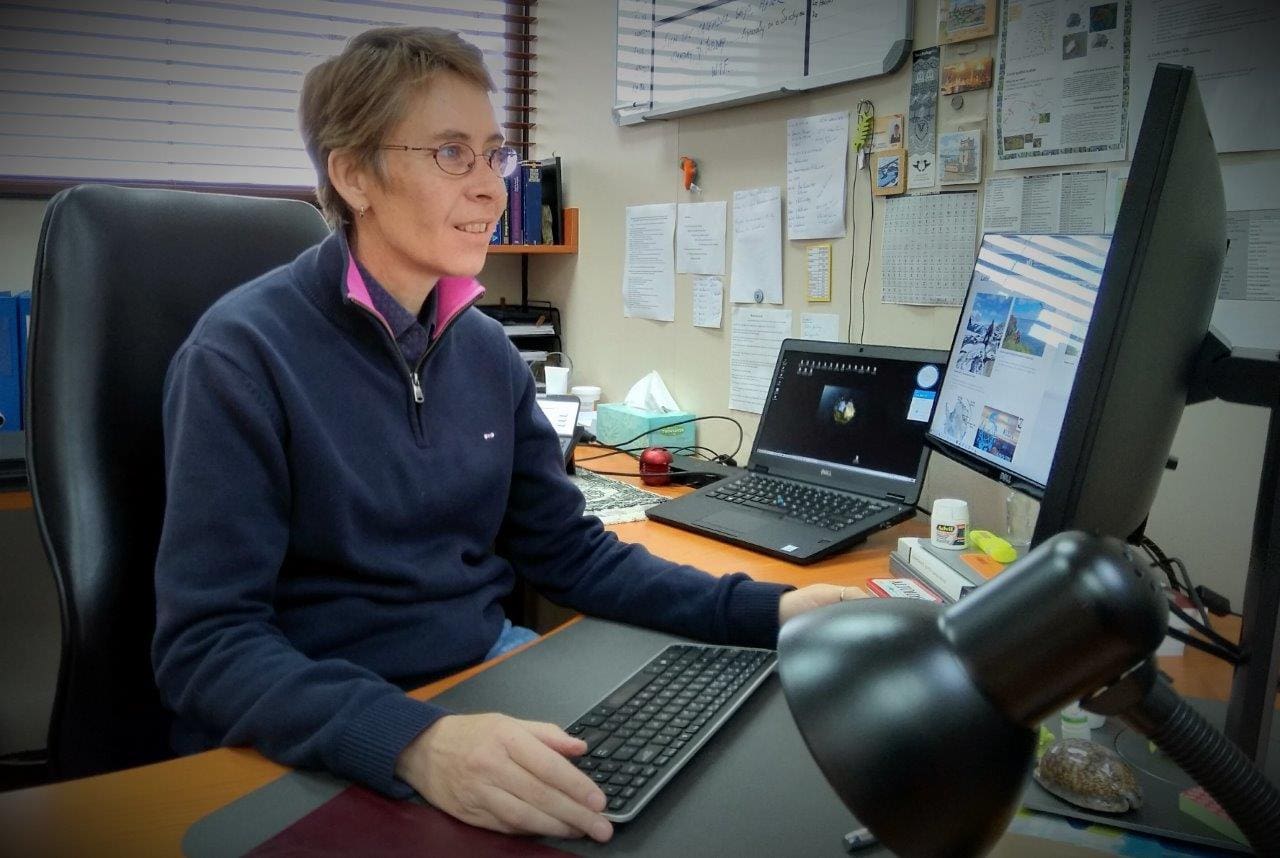 and became a
and became a 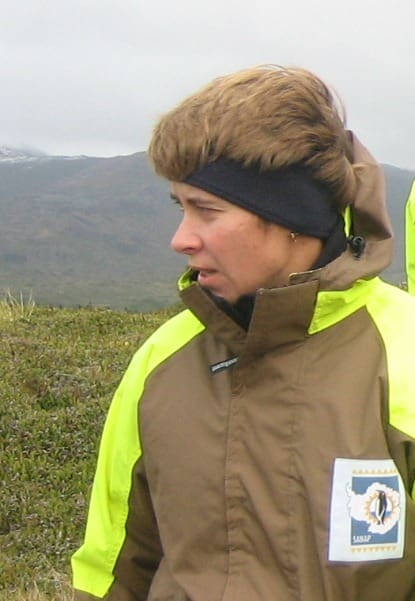 Islands since 2004 and have been fortunate to work with some of the legends as well as bright upcoming researchers (then students, now fully established and leading their own research groups). For my sins, I was appointed as Chief shore-based Scientist in 2006 (the first time that a woman held this position), and managed to get all people to relevant huts on time, even though we almost had to put together a rescue party to retrieve Valdon Smith and Sarette Slabber from Mixed Pickle (typical Marion Island bad weather meant that they could not walk over Azorella Kop). Thankfully the weather cleared, and all shore-based people made it back to the SA Agulhas I.
Islands since 2004 and have been fortunate to work with some of the legends as well as bright upcoming researchers (then students, now fully established and leading their own research groups). For my sins, I was appointed as Chief shore-based Scientist in 2006 (the first time that a woman held this position), and managed to get all people to relevant huts on time, even though we almost had to put together a rescue party to retrieve Valdon Smith and Sarette Slabber from Mixed Pickle (typical Marion Island bad weather meant that they could not walk over Azorella Kop). Thankfully the weather cleared, and all shore-based people made it back to the SA Agulhas I.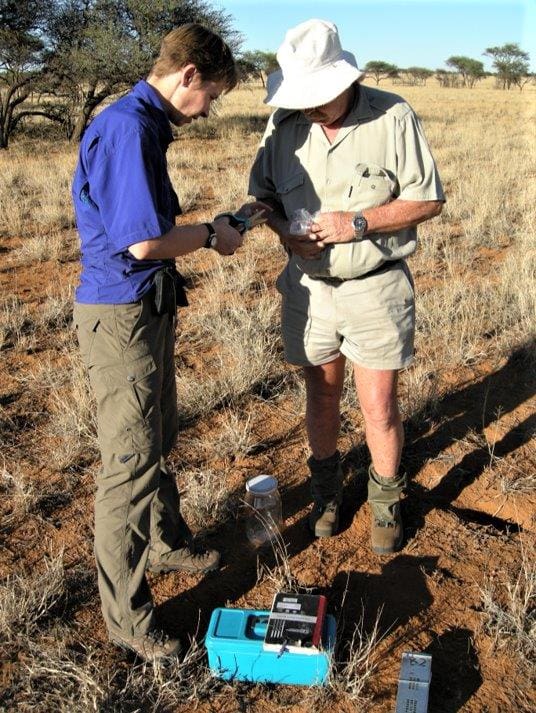 flowers and pollen, and how do they get back to their hives? Are they really all female? Why are some species so successful while others are continuously threatened and faced with extinction; especially considering that our world is changing much faster than ever before?
flowers and pollen, and how do they get back to their hives? Are they really all female? Why are some species so successful while others are continuously threatened and faced with extinction; especially considering that our world is changing much faster than ever before? 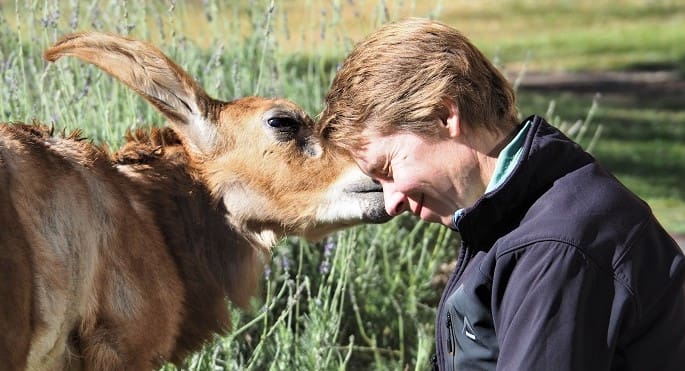
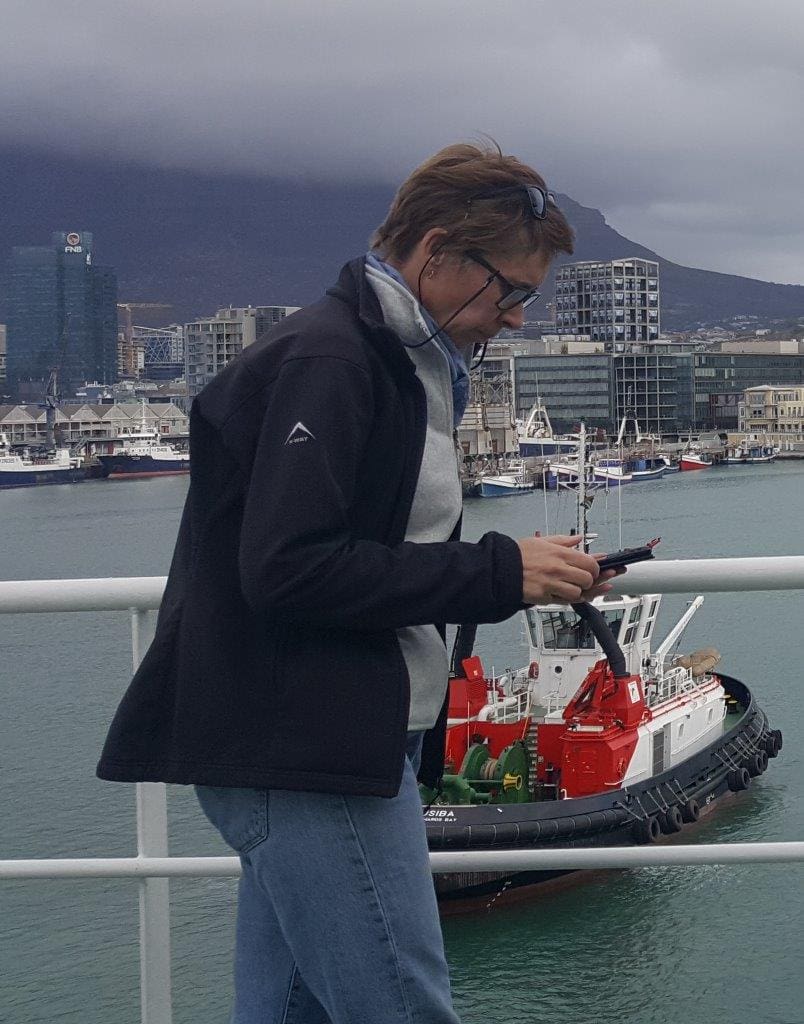 or others impose on us; and it is crucial that we break through these (non-real) boundaries. STEM fields are a case in hand. This is especially true for woman, who traditionally were considered homemakers or child-carers. In STEM specifically, fields such as mathematics, physics and engineering, and traditionally more field-based disciplines such as zoology, botany, or oceanography, are seen as more suited to men (either because women were not traditionally considered as analytically strong, capable to work in the field, or for that matter, be away from home for any period of time). It is critical that any person (both men and women) should carefully consider what they enjoy, what their specific strengths are (be that a STEM career for a woman, or as a child carer / homemaker for a man), and then pursue that with all their strength and passion. Personally, I was initially directed into a field that I had no interest in (because I could not answer questions asked regarding where I would work if my husband lived in a small town), and from a personal perspective I strongly urge and support woman that want to step out of the “beaten track”, i.e., what is typically expected from you by society, and follow what they are passionate about.
or others impose on us; and it is crucial that we break through these (non-real) boundaries. STEM fields are a case in hand. This is especially true for woman, who traditionally were considered homemakers or child-carers. In STEM specifically, fields such as mathematics, physics and engineering, and traditionally more field-based disciplines such as zoology, botany, or oceanography, are seen as more suited to men (either because women were not traditionally considered as analytically strong, capable to work in the field, or for that matter, be away from home for any period of time). It is critical that any person (both men and women) should carefully consider what they enjoy, what their specific strengths are (be that a STEM career for a woman, or as a child carer / homemaker for a man), and then pursue that with all their strength and passion. Personally, I was initially directed into a field that I had no interest in (because I could not answer questions asked regarding where I would work if my husband lived in a small town), and from a personal perspective I strongly urge and support woman that want to step out of the “beaten track”, i.e., what is typically expected from you by society, and follow what they are passionate about. I am currently involved in a number of larger projects which aim to understand how species (individuals / populations) respond to change. One such project is on sub-Antarctic Marion Island (funded through the South African National Antarctic Programme), where we are assembling the full genomes of a number of macroinvertebrate species, with the ultimate aim to understand genes under selection, and how biotic and abiotic factors shape the genetic diversity on oceanic islands. In South Africa, and in collaboration with national (SANBI) and international partners (an NSF/NRF funded project), we are investigating how reptile species adapt to changing and transformed landscapes, and what the downstream impacts are on their genes, morphology and behaviour. Across the African continent, and in collaboration with the Research Centre in Biodiversity and Genetic Resources (Portugal), we are documenting the spatial genetic patterns in a number of economically important larger antelope species (such as roan- and sable antelope); our work here directly informs South African policies on translocations.
I am currently involved in a number of larger projects which aim to understand how species (individuals / populations) respond to change. One such project is on sub-Antarctic Marion Island (funded through the South African National Antarctic Programme), where we are assembling the full genomes of a number of macroinvertebrate species, with the ultimate aim to understand genes under selection, and how biotic and abiotic factors shape the genetic diversity on oceanic islands. In South Africa, and in collaboration with national (SANBI) and international partners (an NSF/NRF funded project), we are investigating how reptile species adapt to changing and transformed landscapes, and what the downstream impacts are on their genes, morphology and behaviour. Across the African continent, and in collaboration with the Research Centre in Biodiversity and Genetic Resources (Portugal), we are documenting the spatial genetic patterns in a number of economically important larger antelope species (such as roan- and sable antelope); our work here directly informs South African policies on translocations.


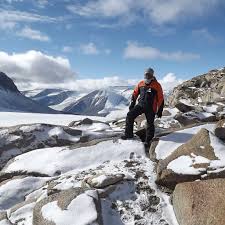 as our first Monday Man.
as our first Monday Man.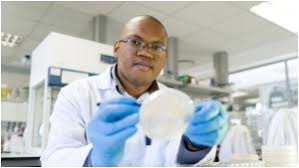 There are very few careers which allow you to generate new knowledge and acquire new insights on a daily basis. Working as a scientist allows me to be at the very cutting edge of knowledge generation
There are very few careers which allow you to generate new knowledge and acquire new insights on a daily basis. Working as a scientist allows me to be at the very cutting edge of knowledge generation  within my field. I love being able to work in a team of scientist working on exciting projects. I get to mentor a range of students, from undergraduates to PhD, all with unique perspectives and insights. As a SANAP researcher, my work allows me access to unique study sites and locations and allows me to work on topics very few people have access to.
within my field. I love being able to work in a team of scientist working on exciting projects. I get to mentor a range of students, from undergraduates to PhD, all with unique perspectives and insights. As a SANAP researcher, my work allows me access to unique study sites and locations and allows me to work on topics very few people have access to.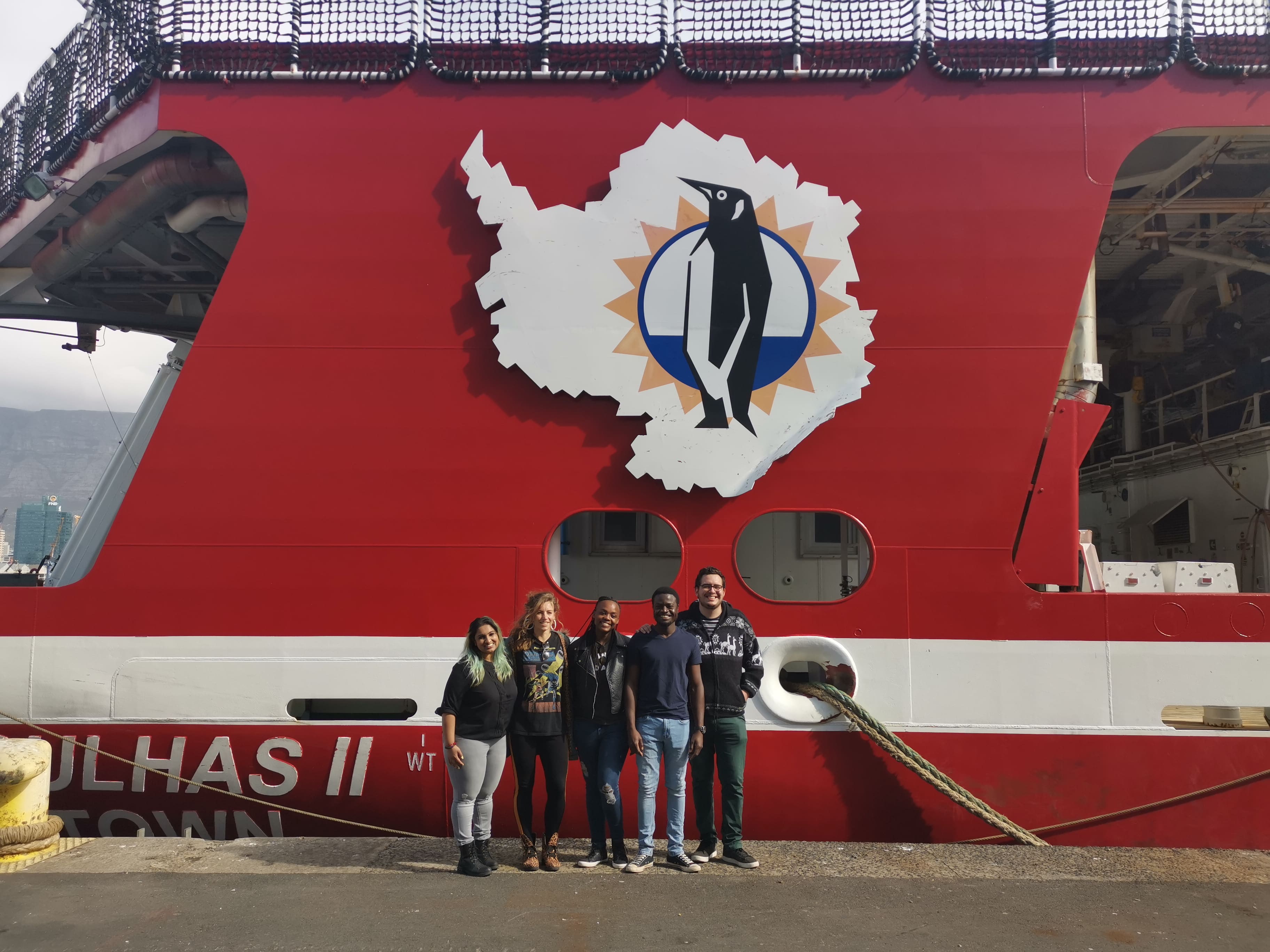
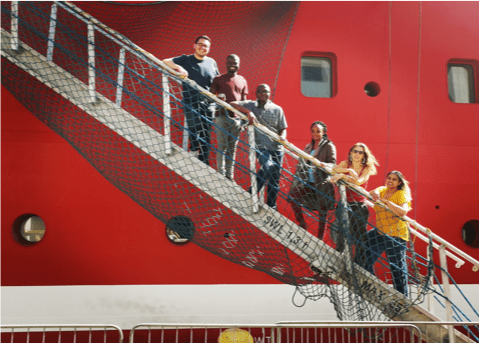
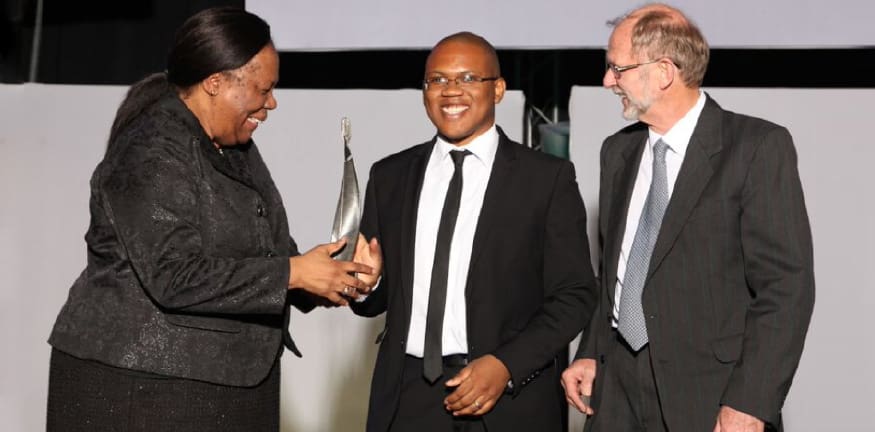 Dr Thulani Makhalanyane was the 2014/15 winner of a TW Kambule-
Dr Thulani Makhalanyane was the 2014/15 winner of a TW Kambule-



